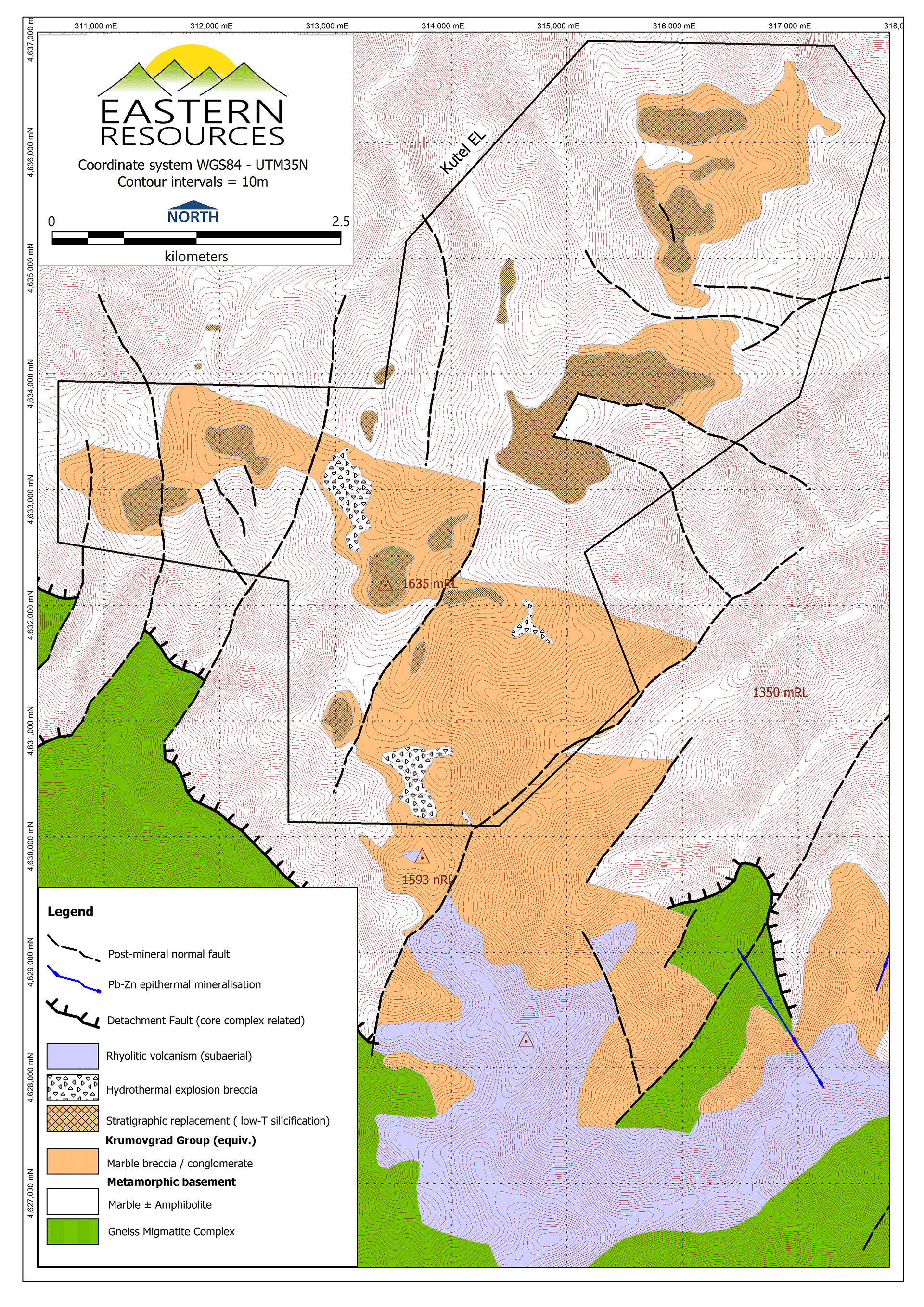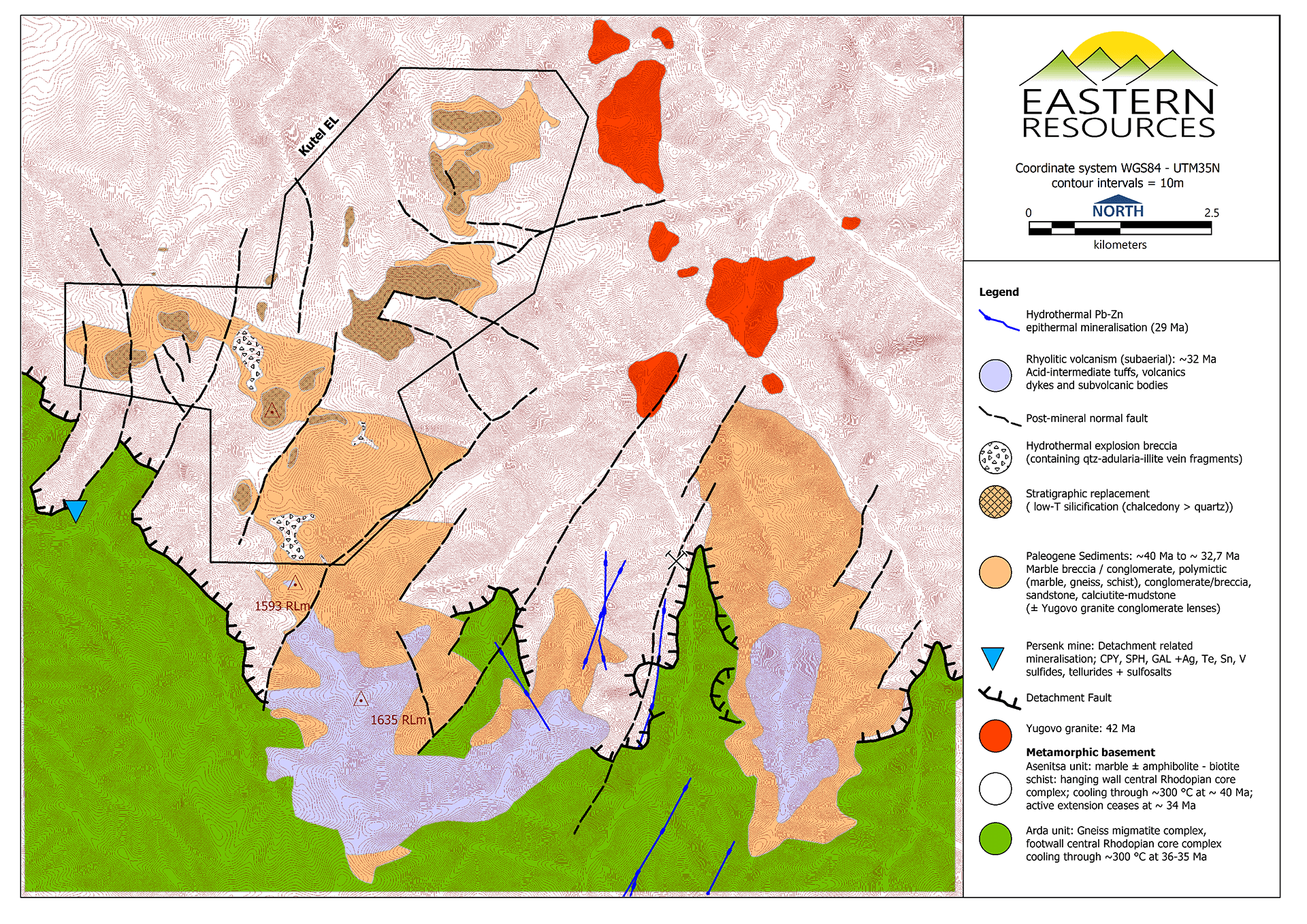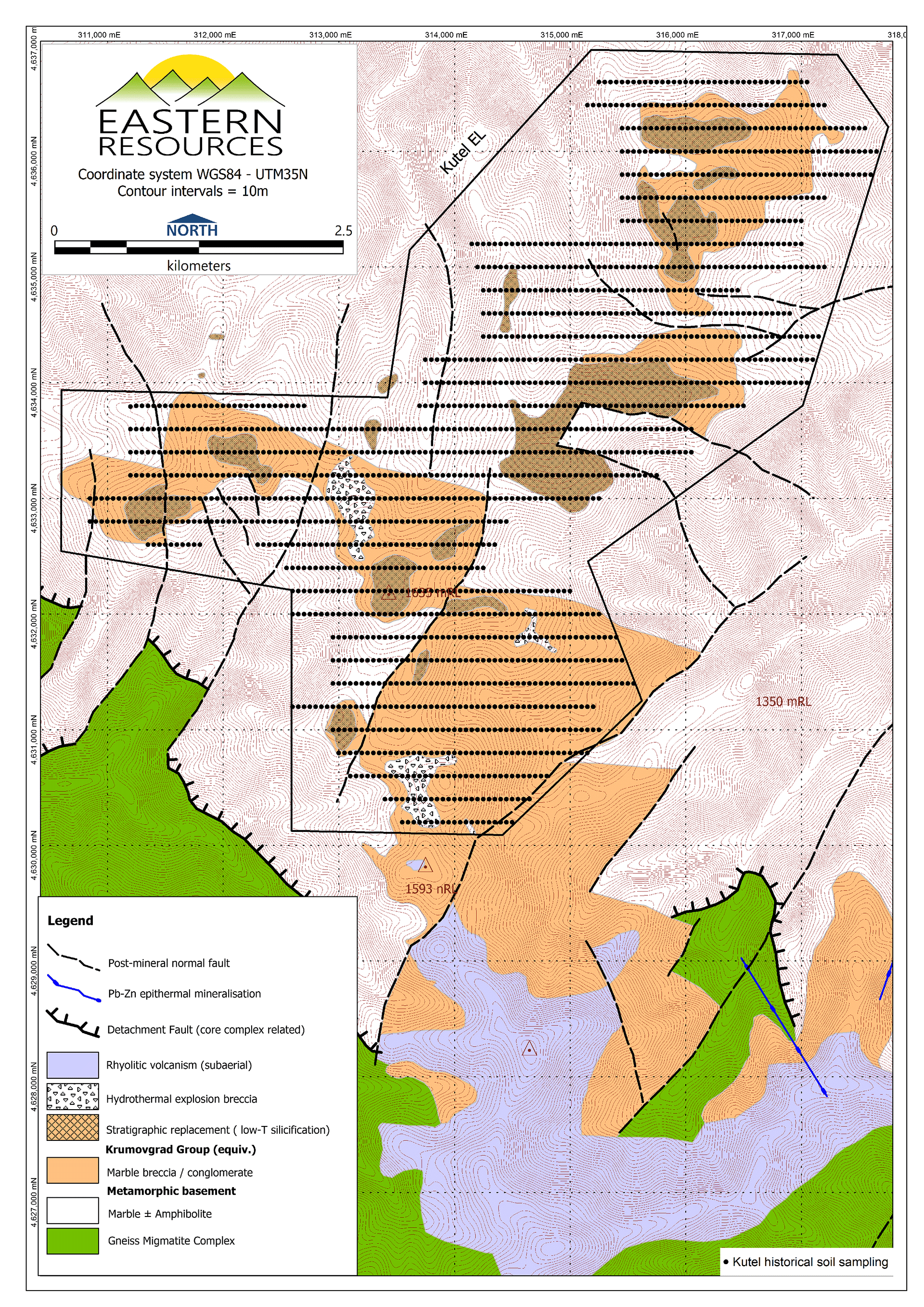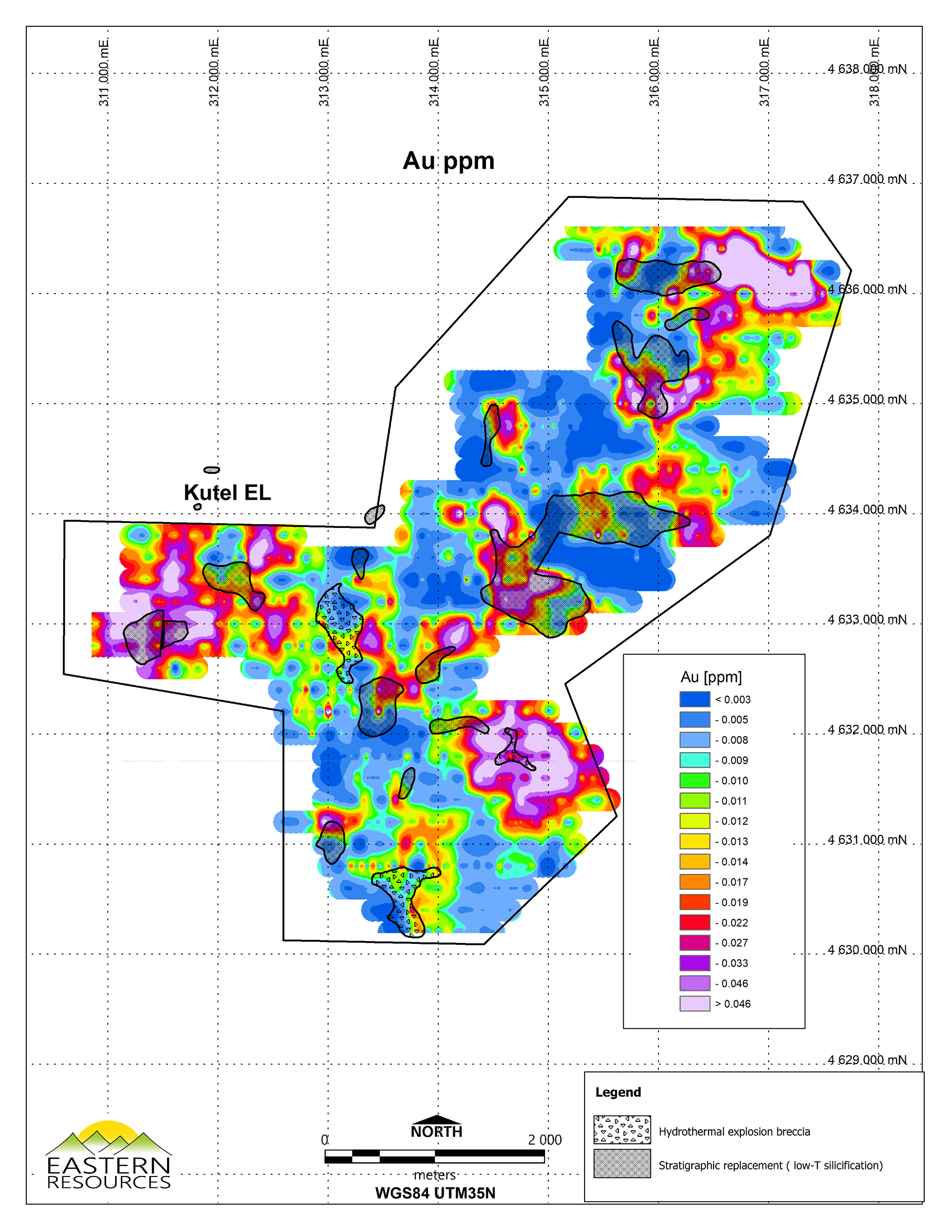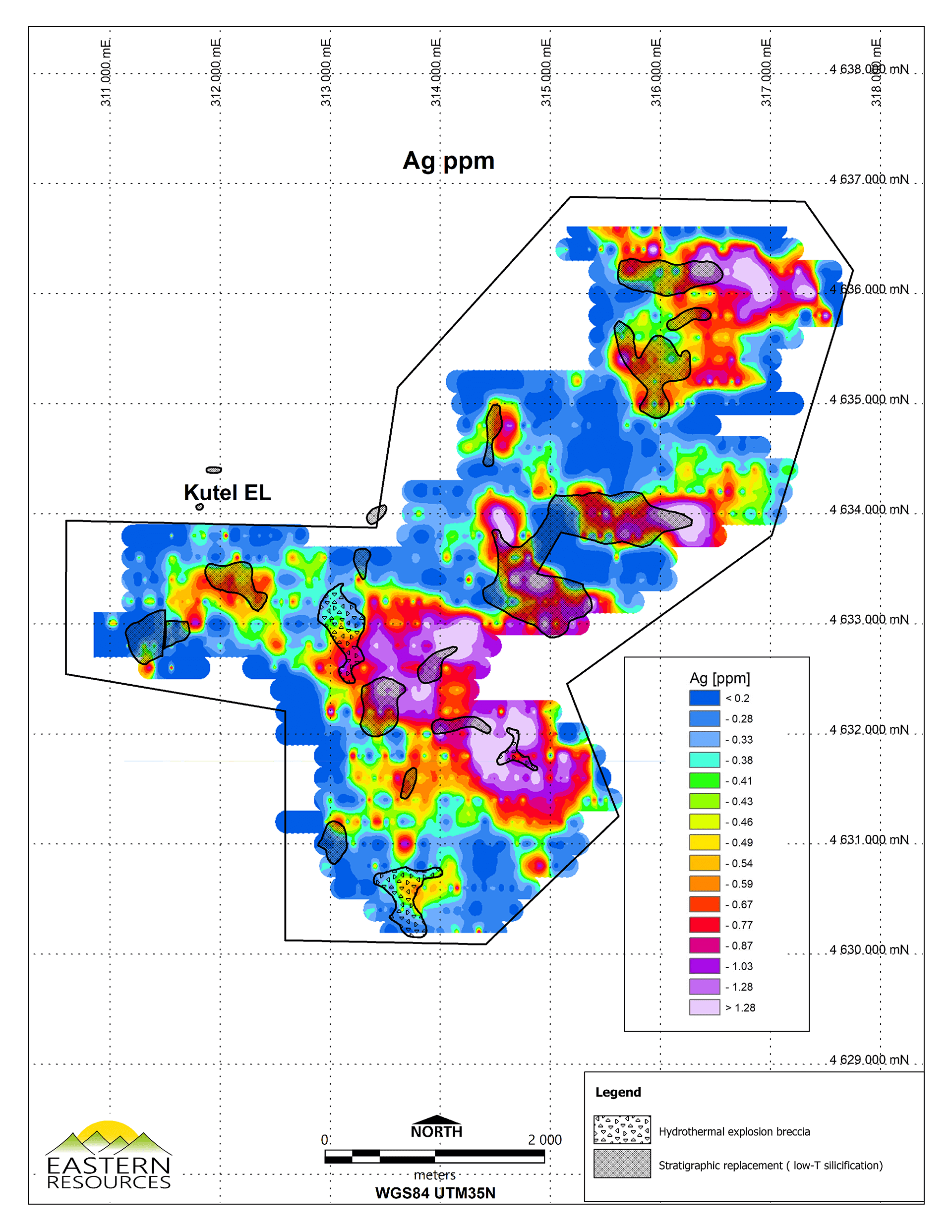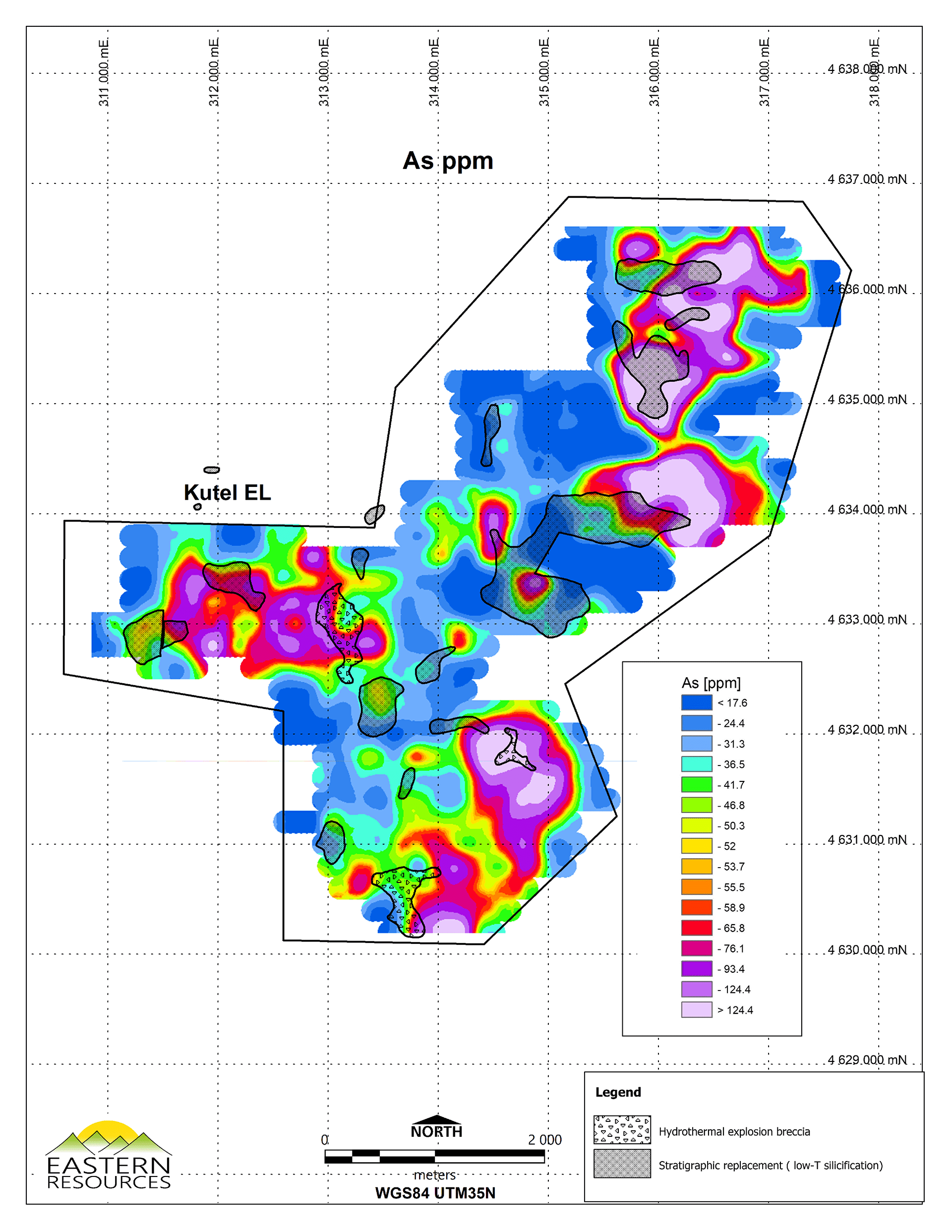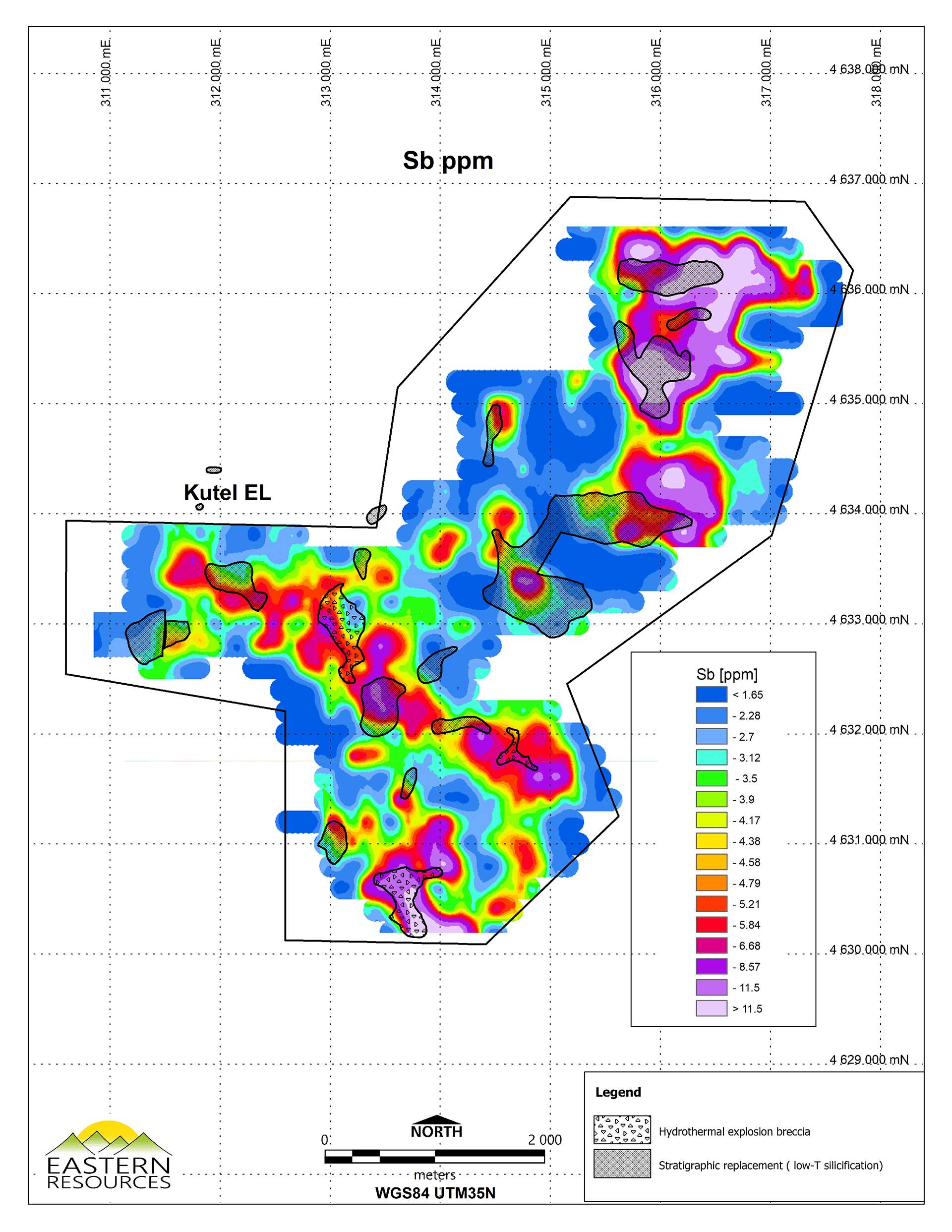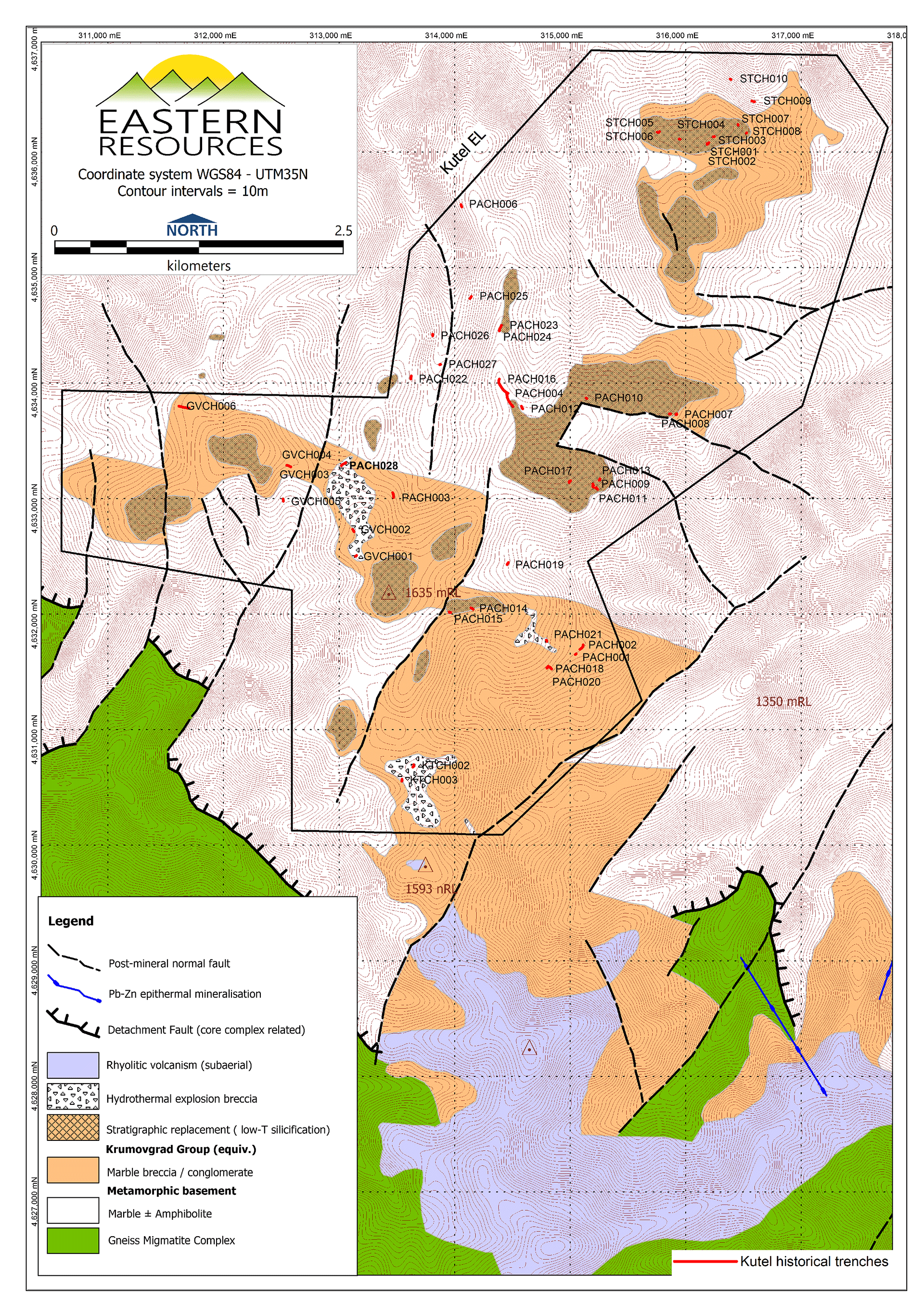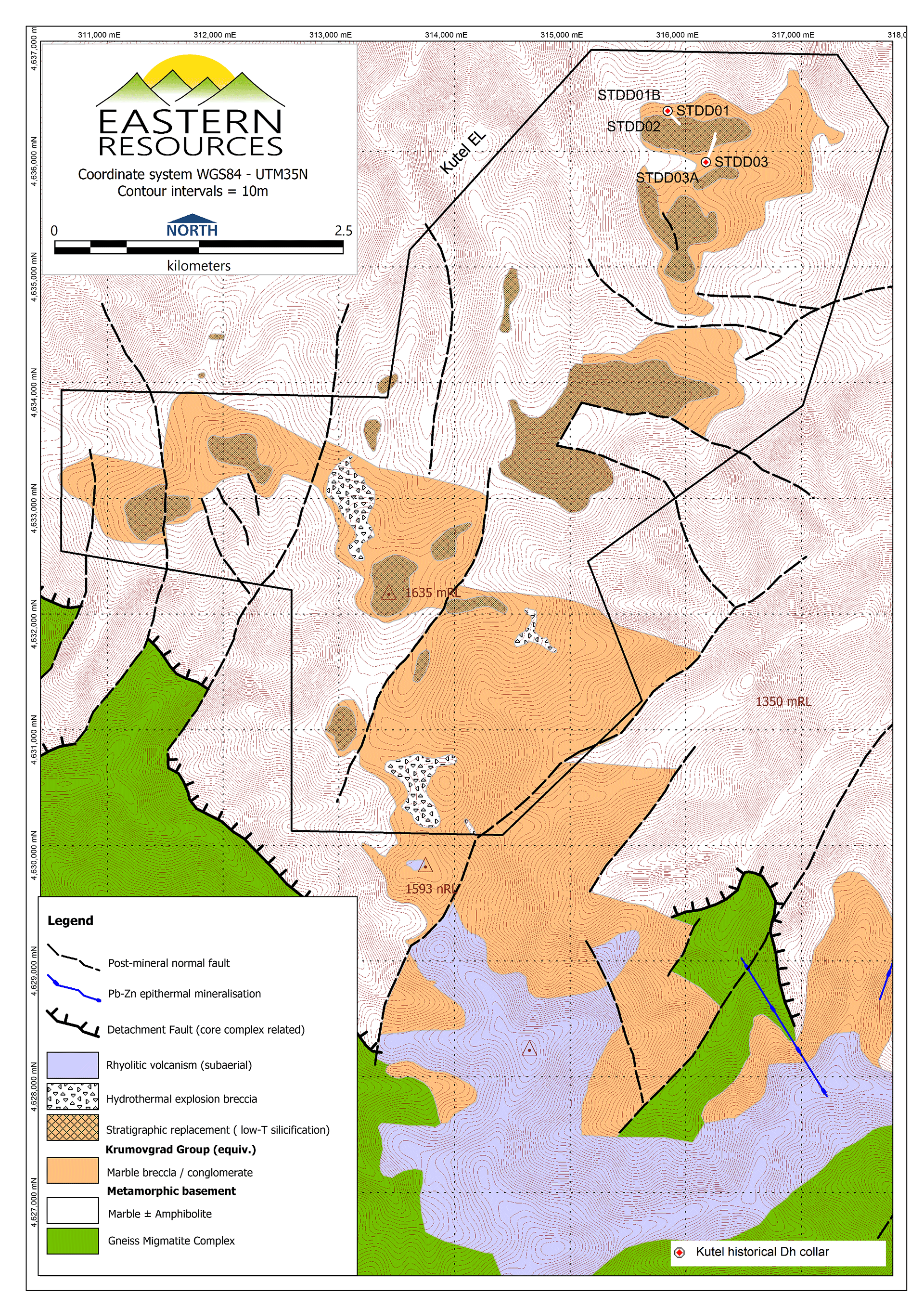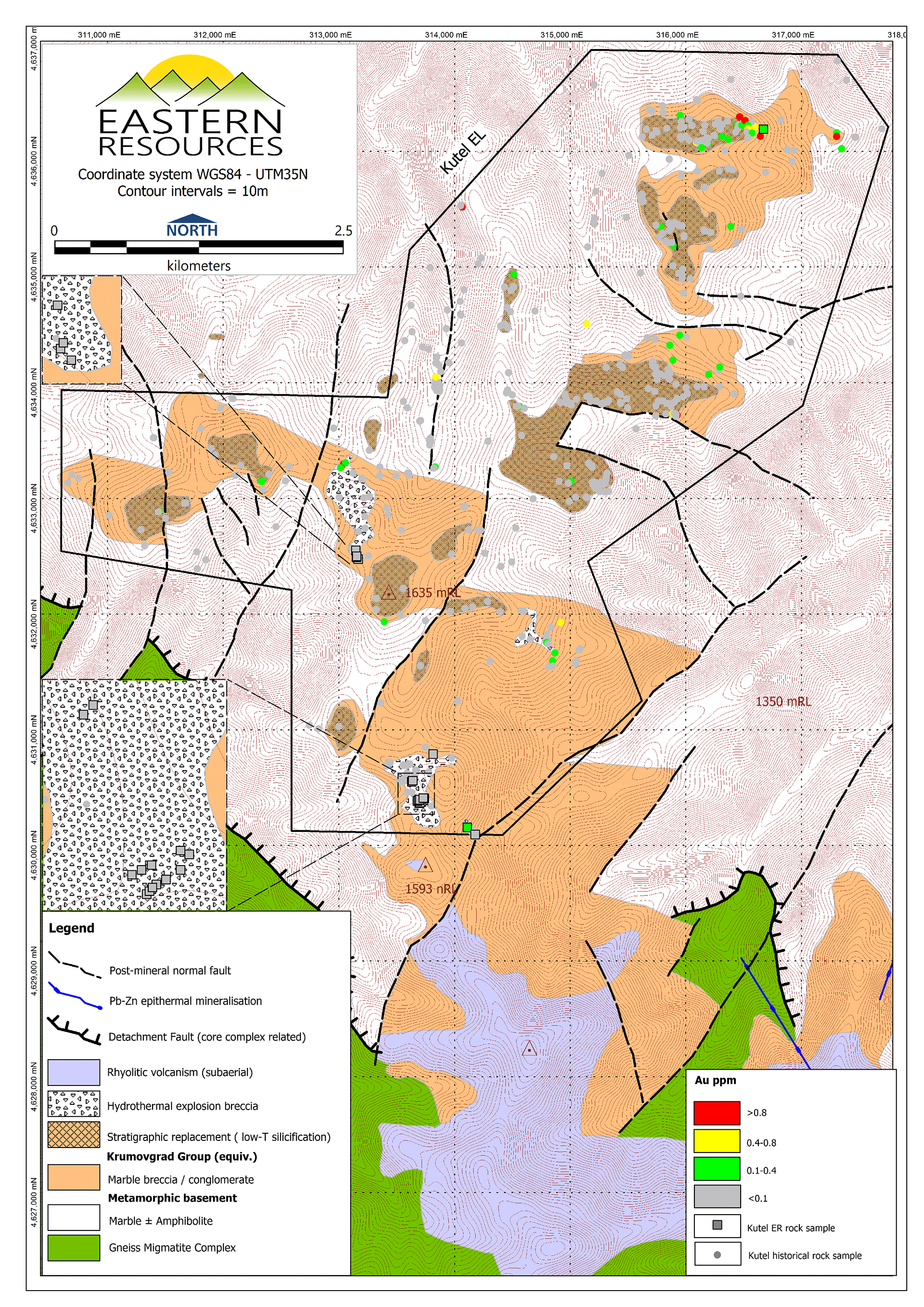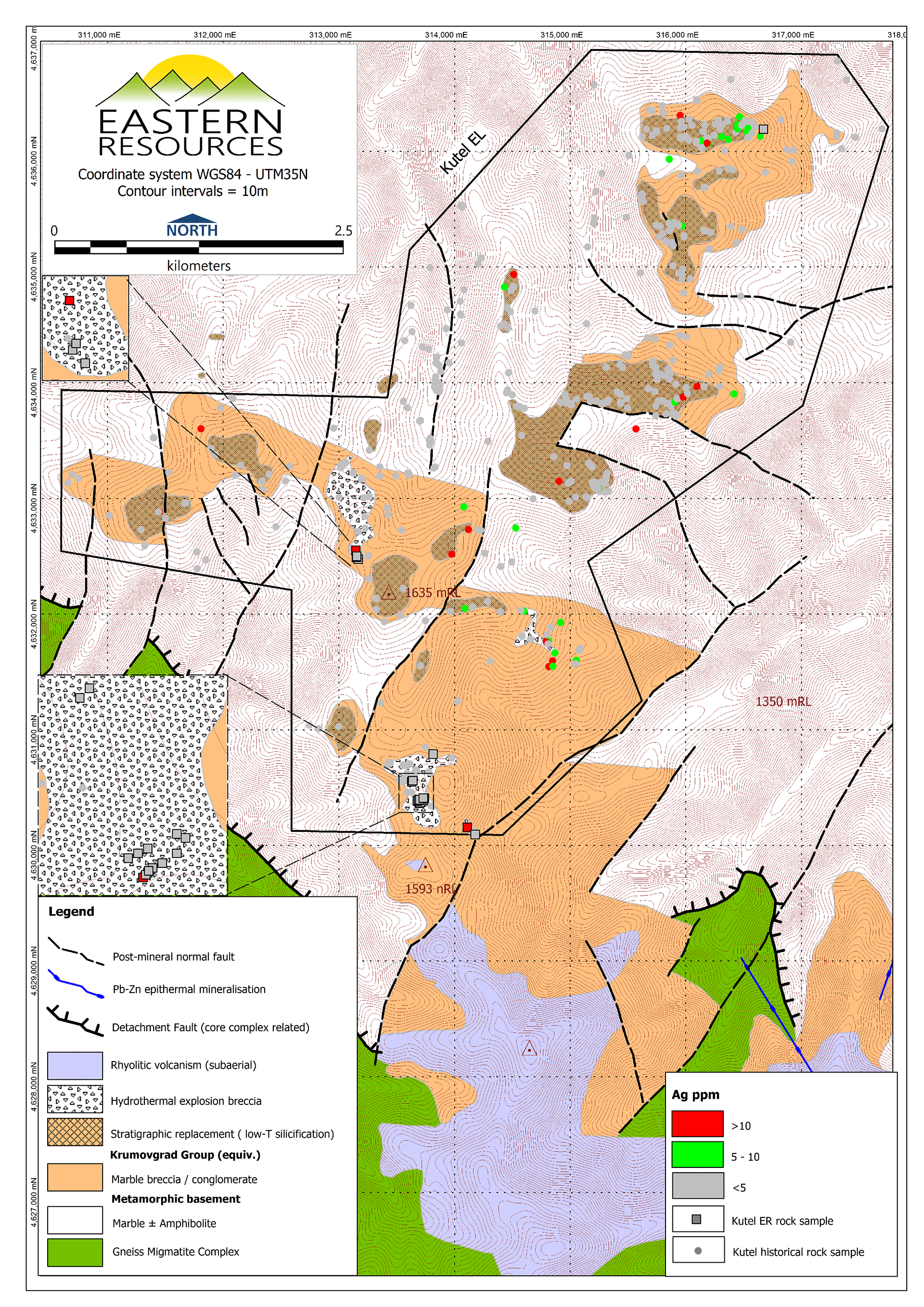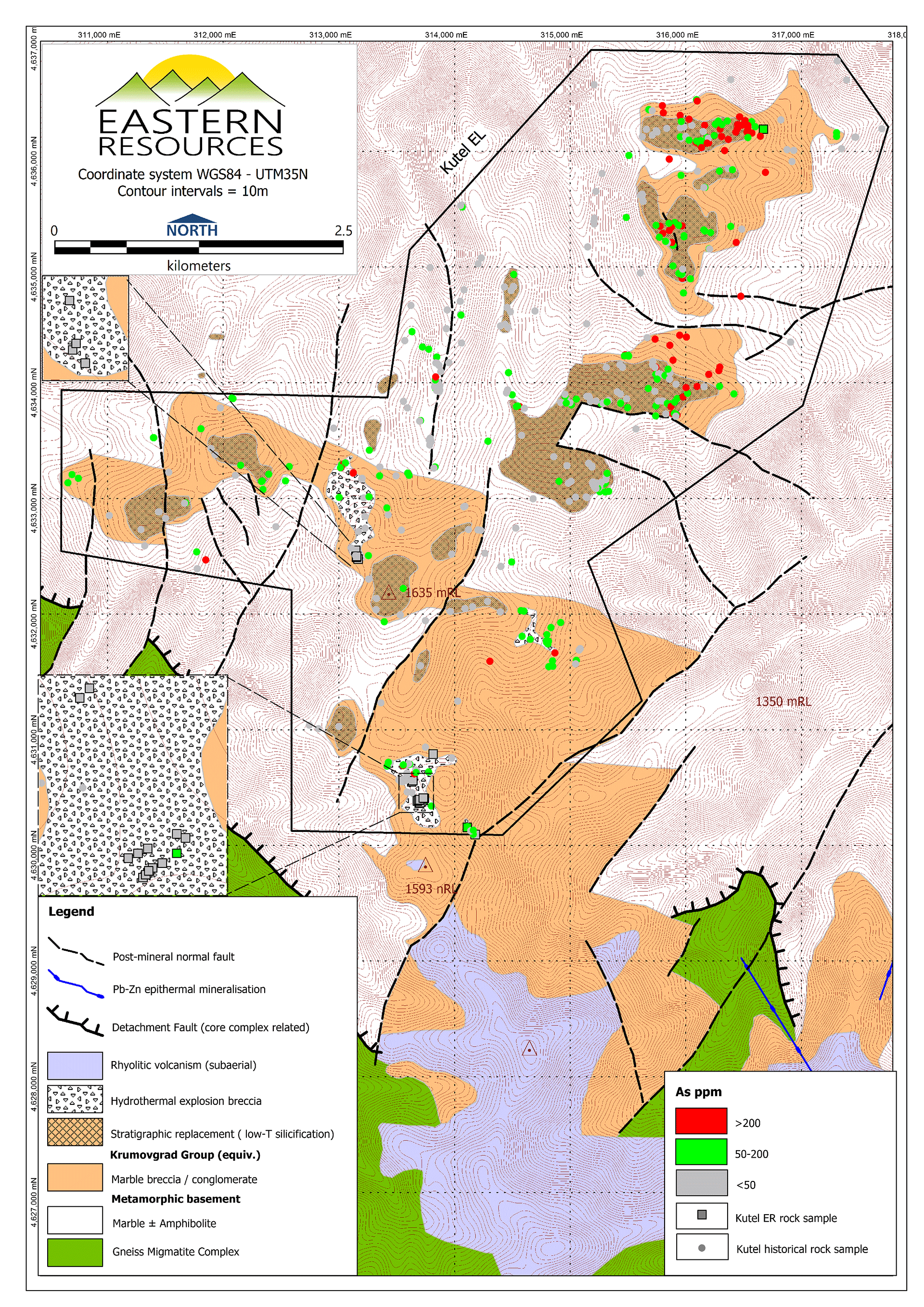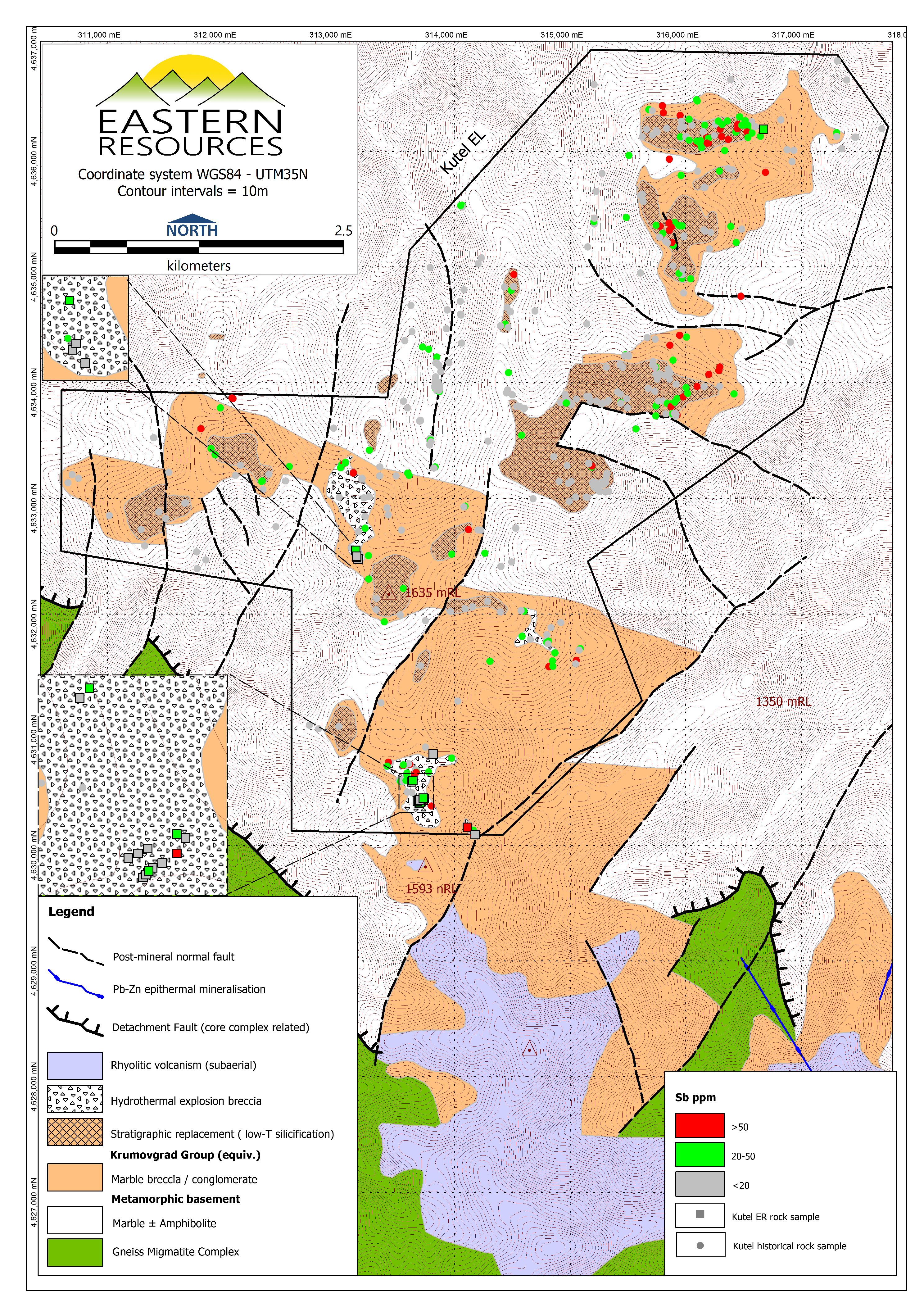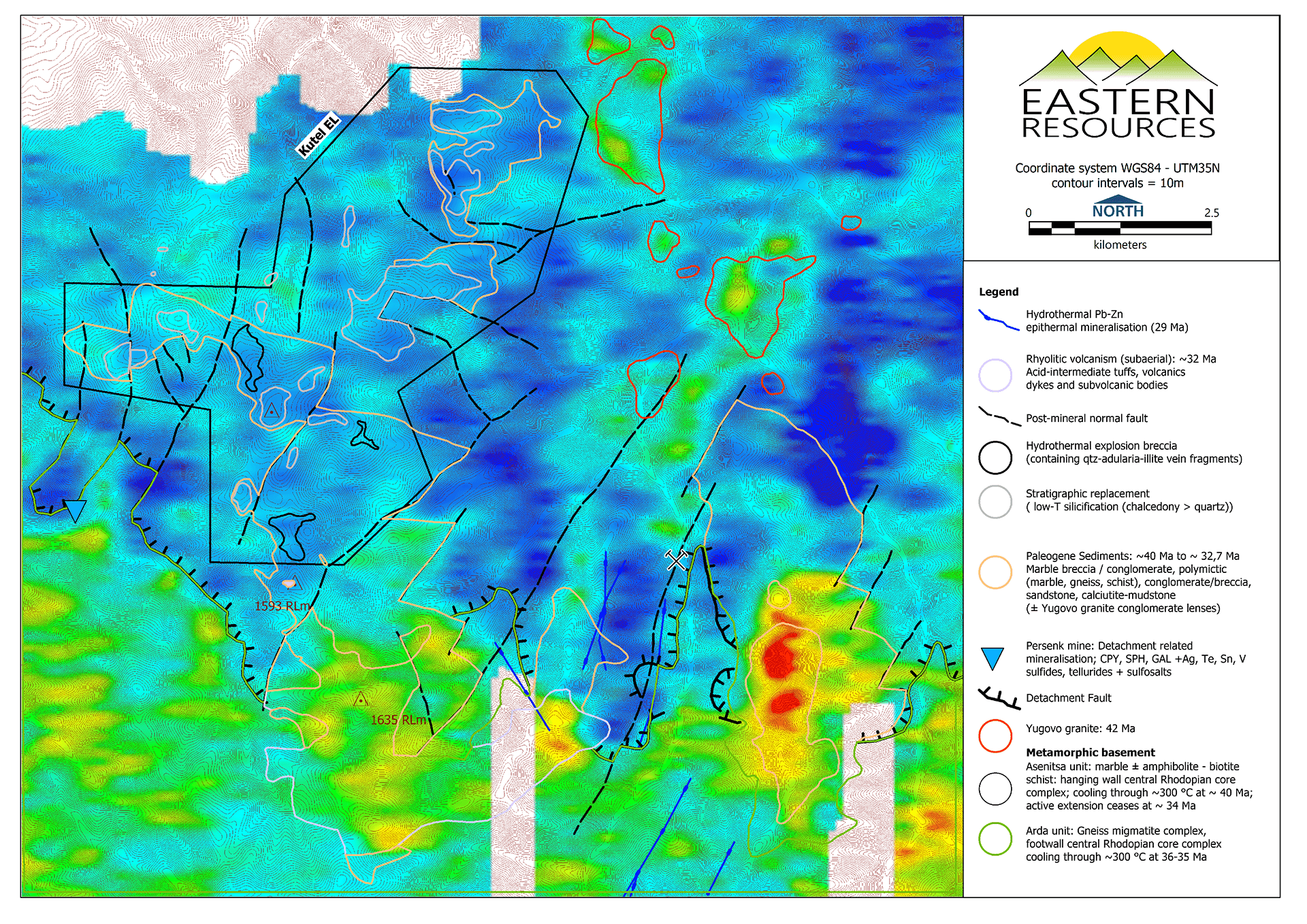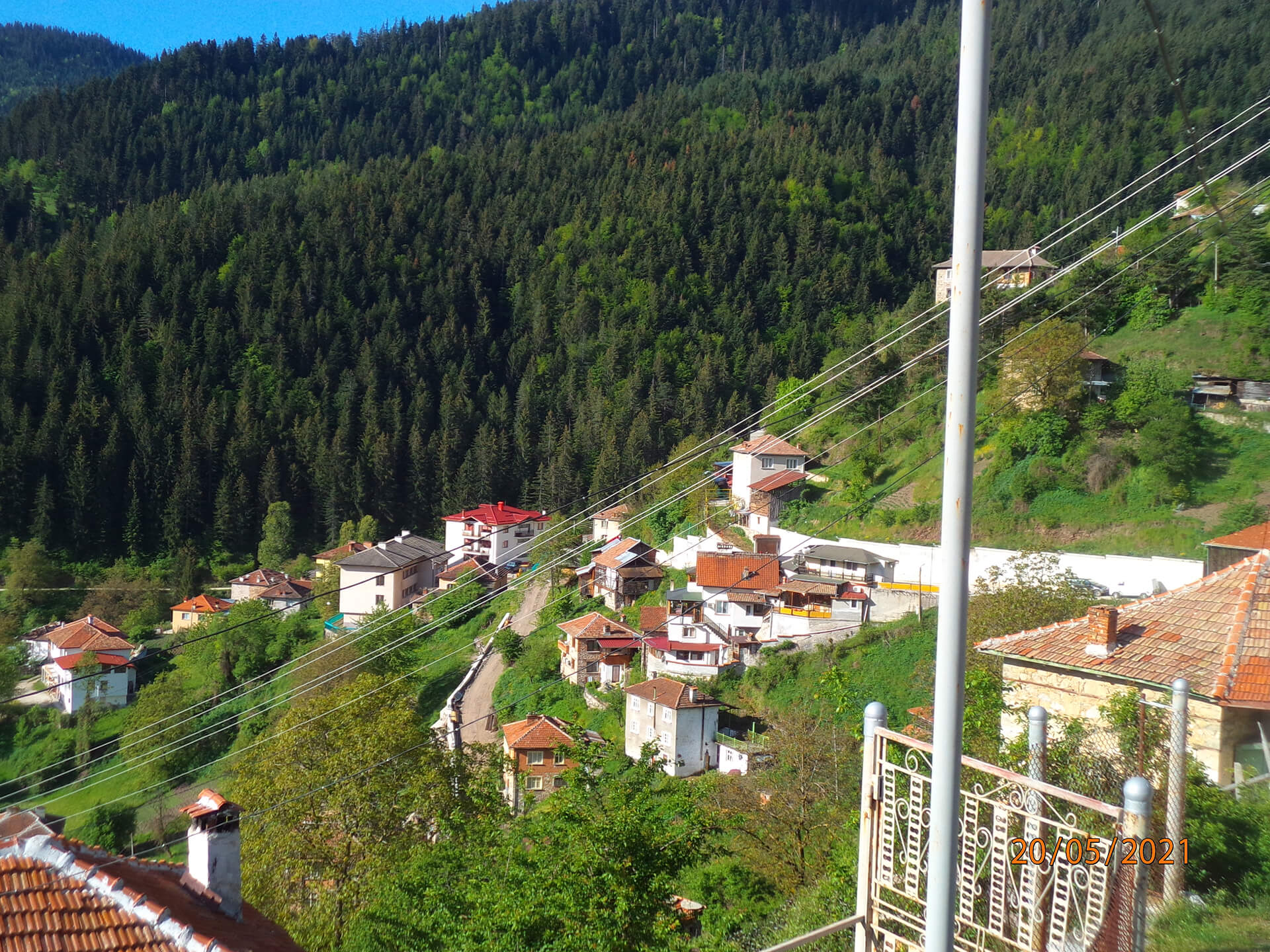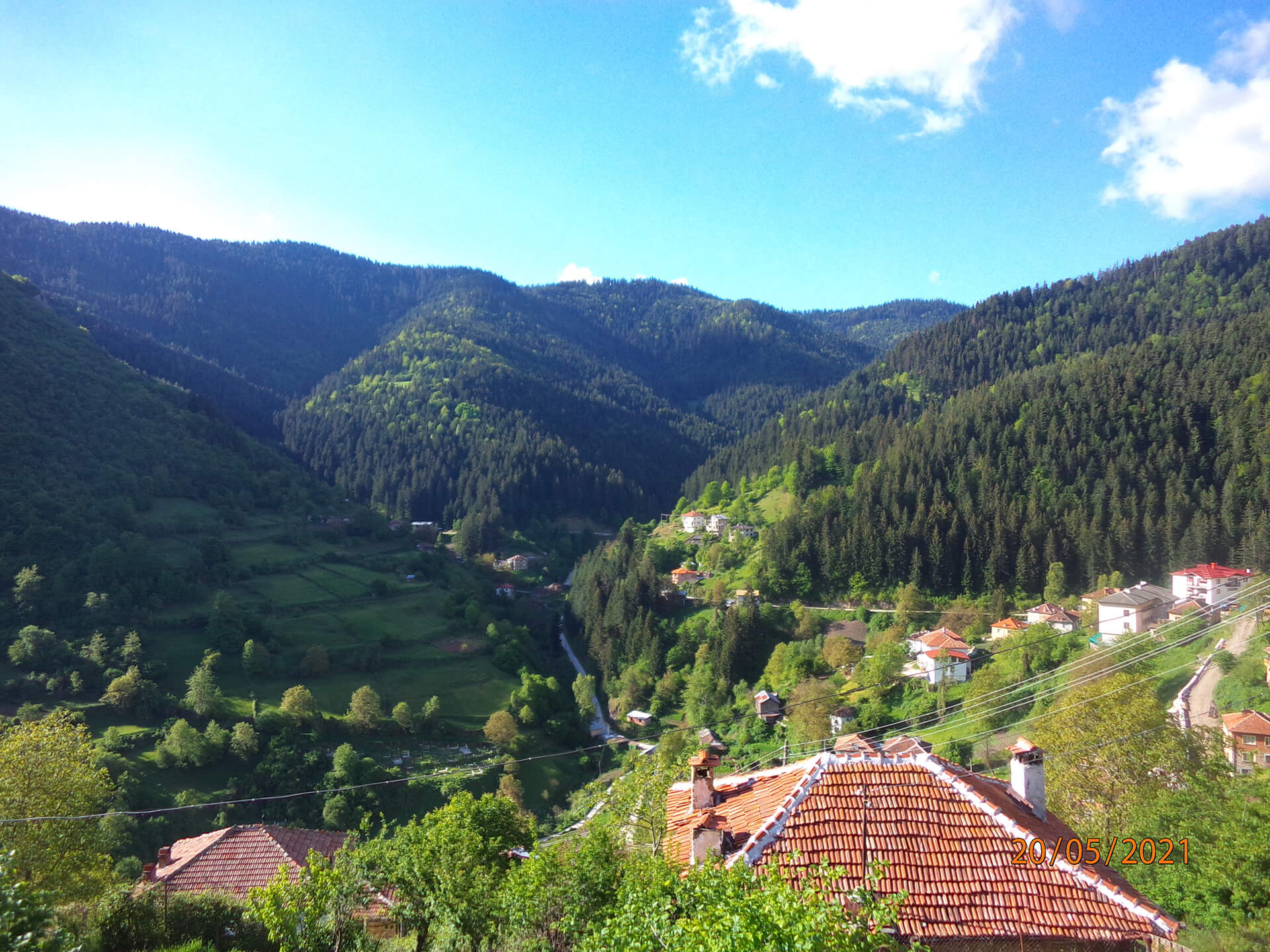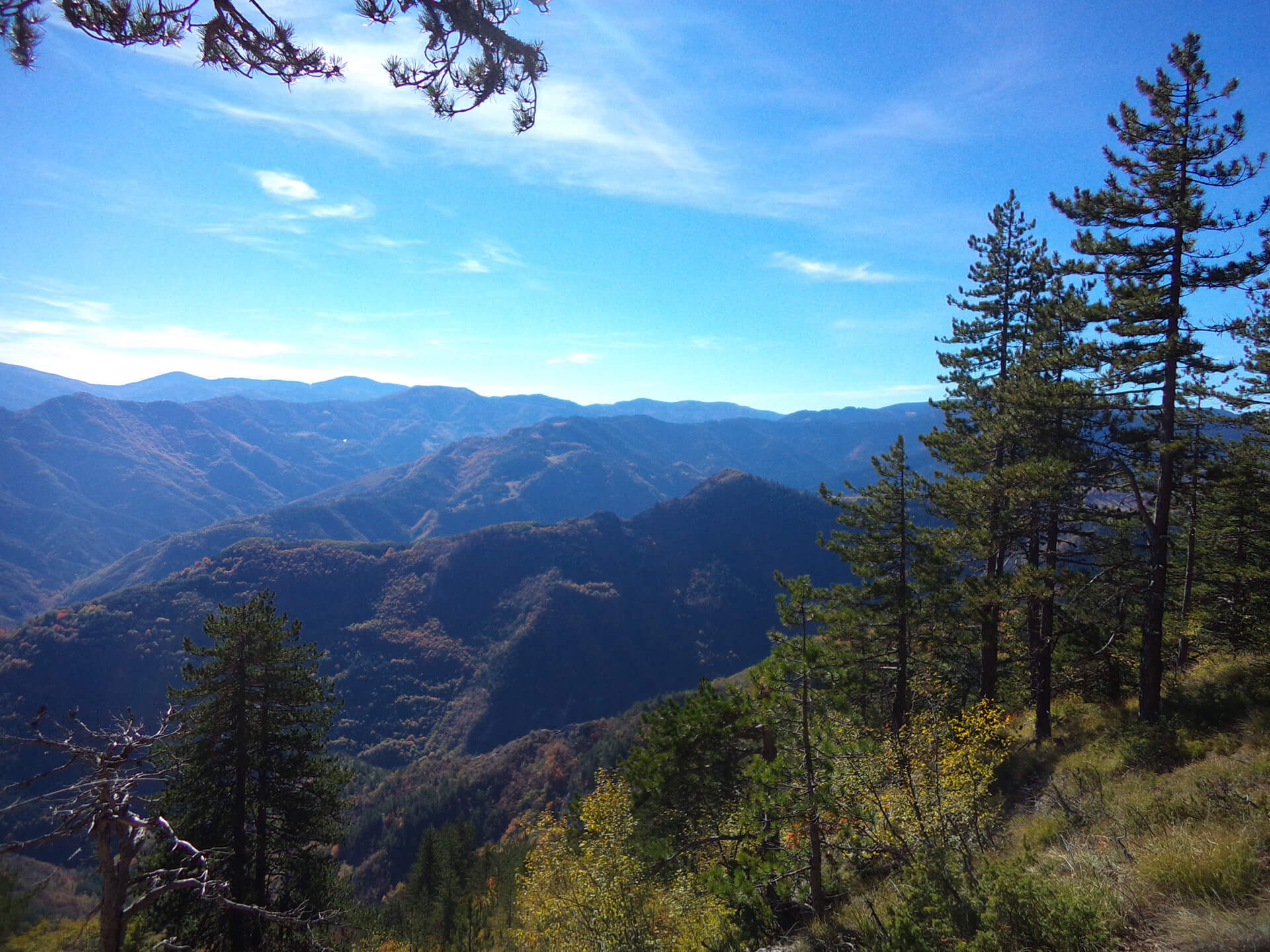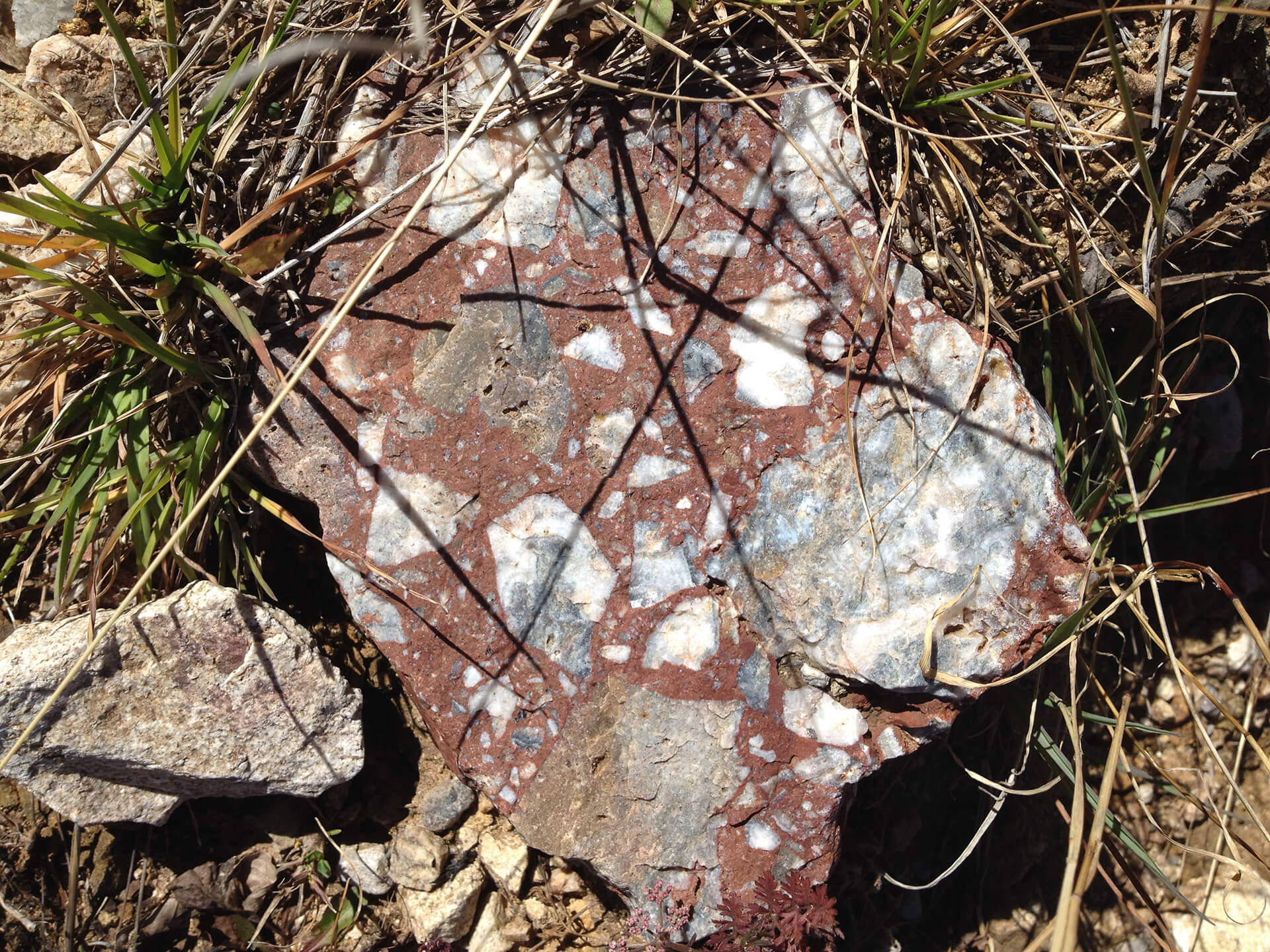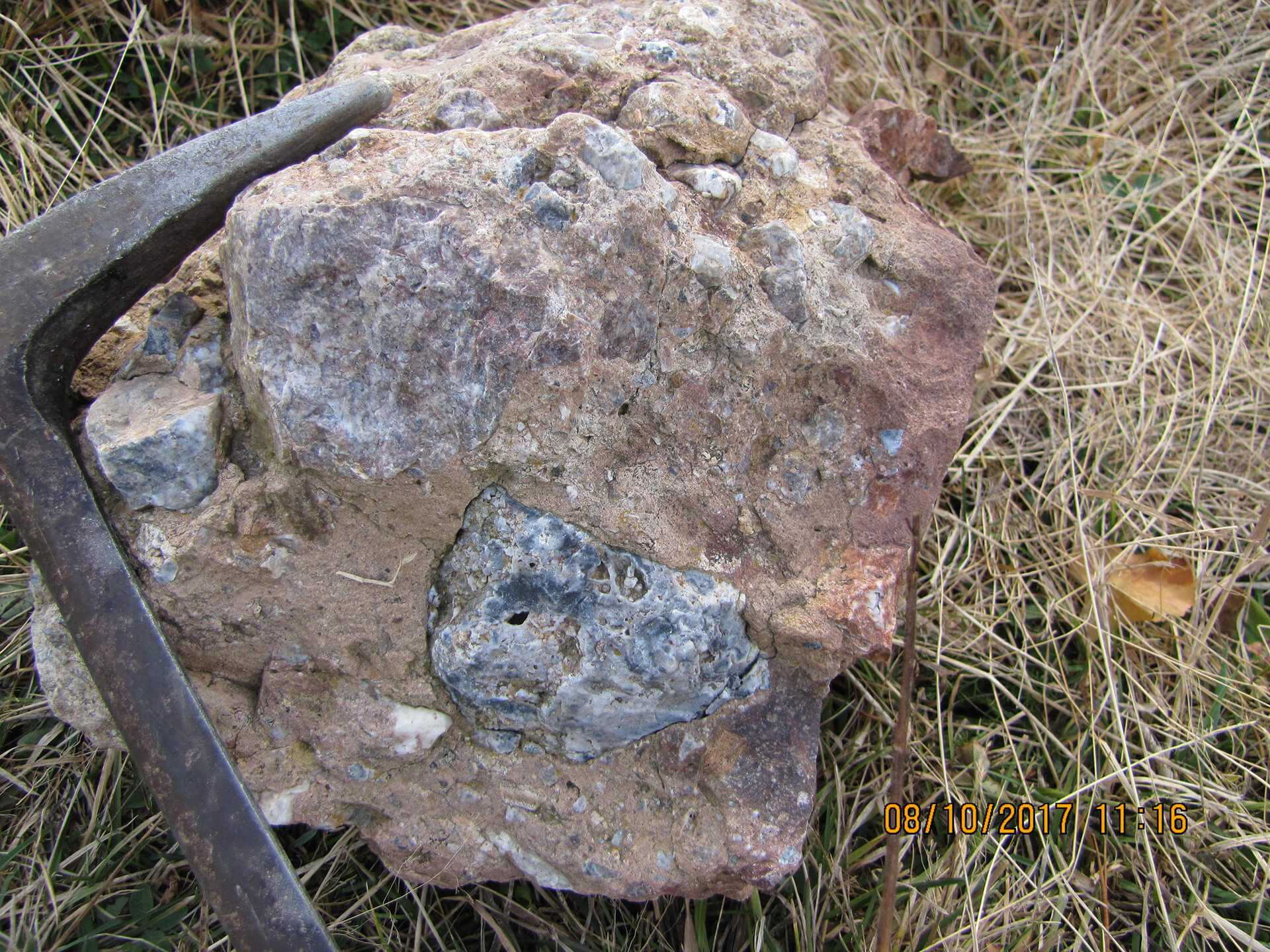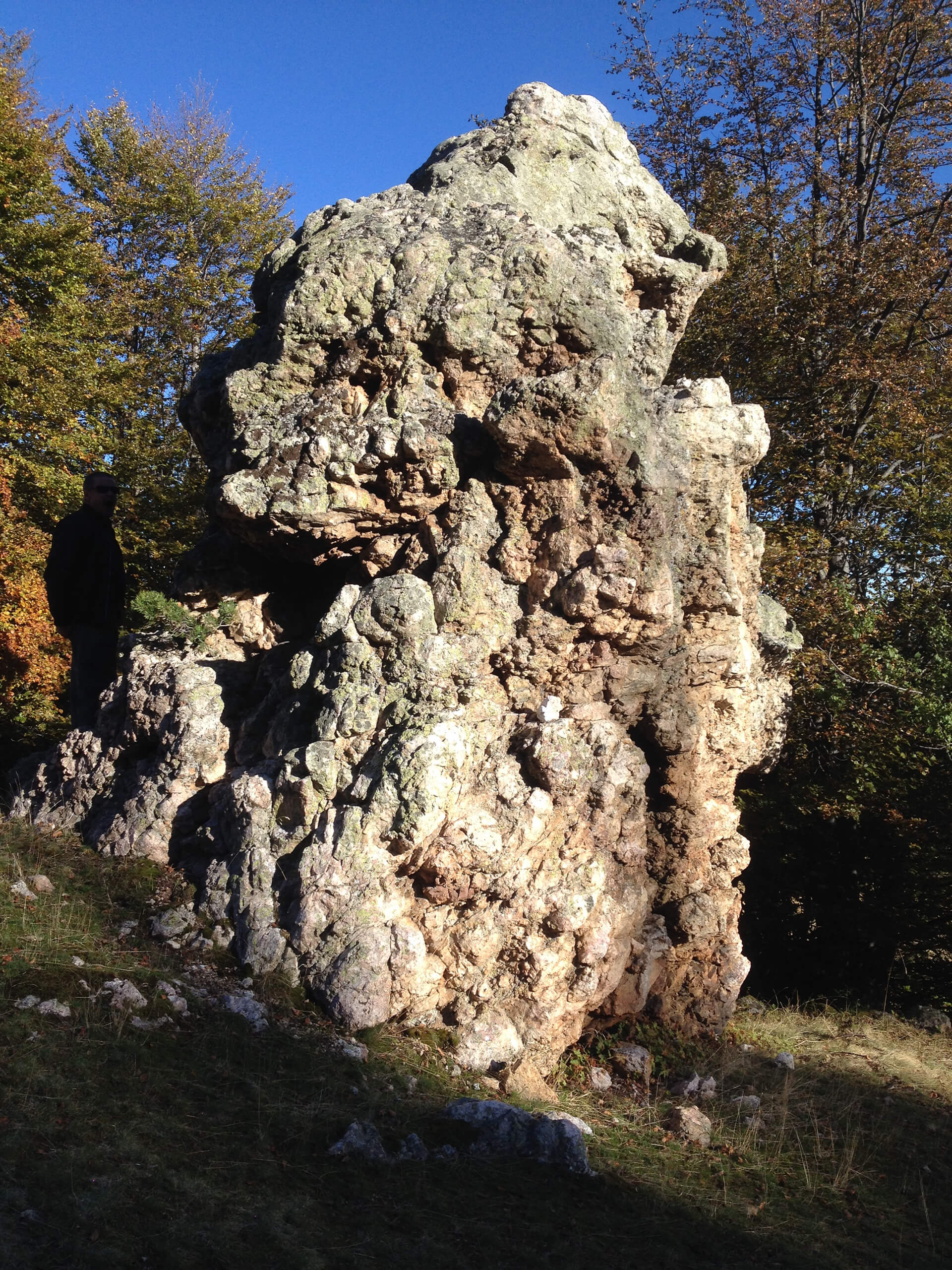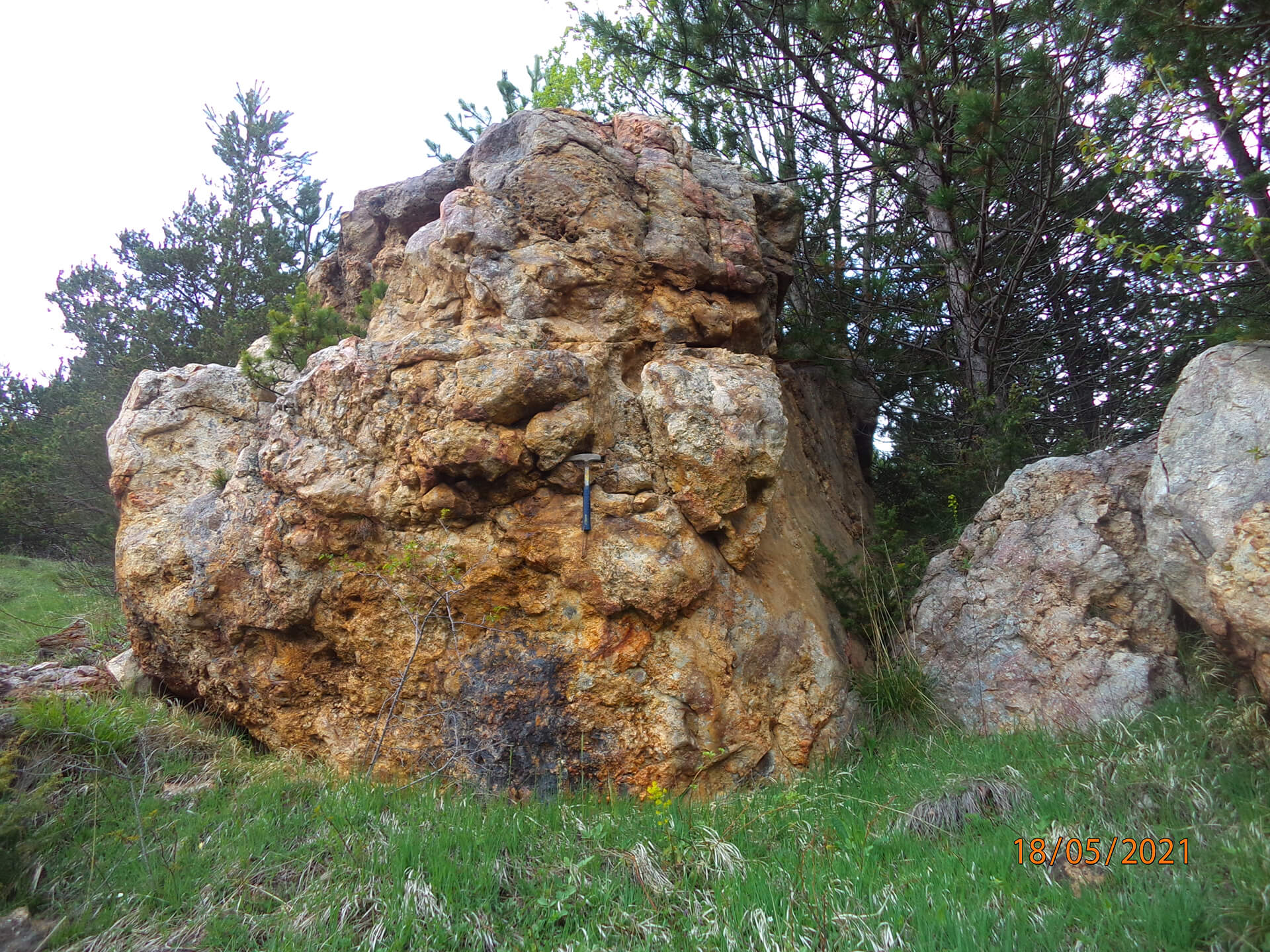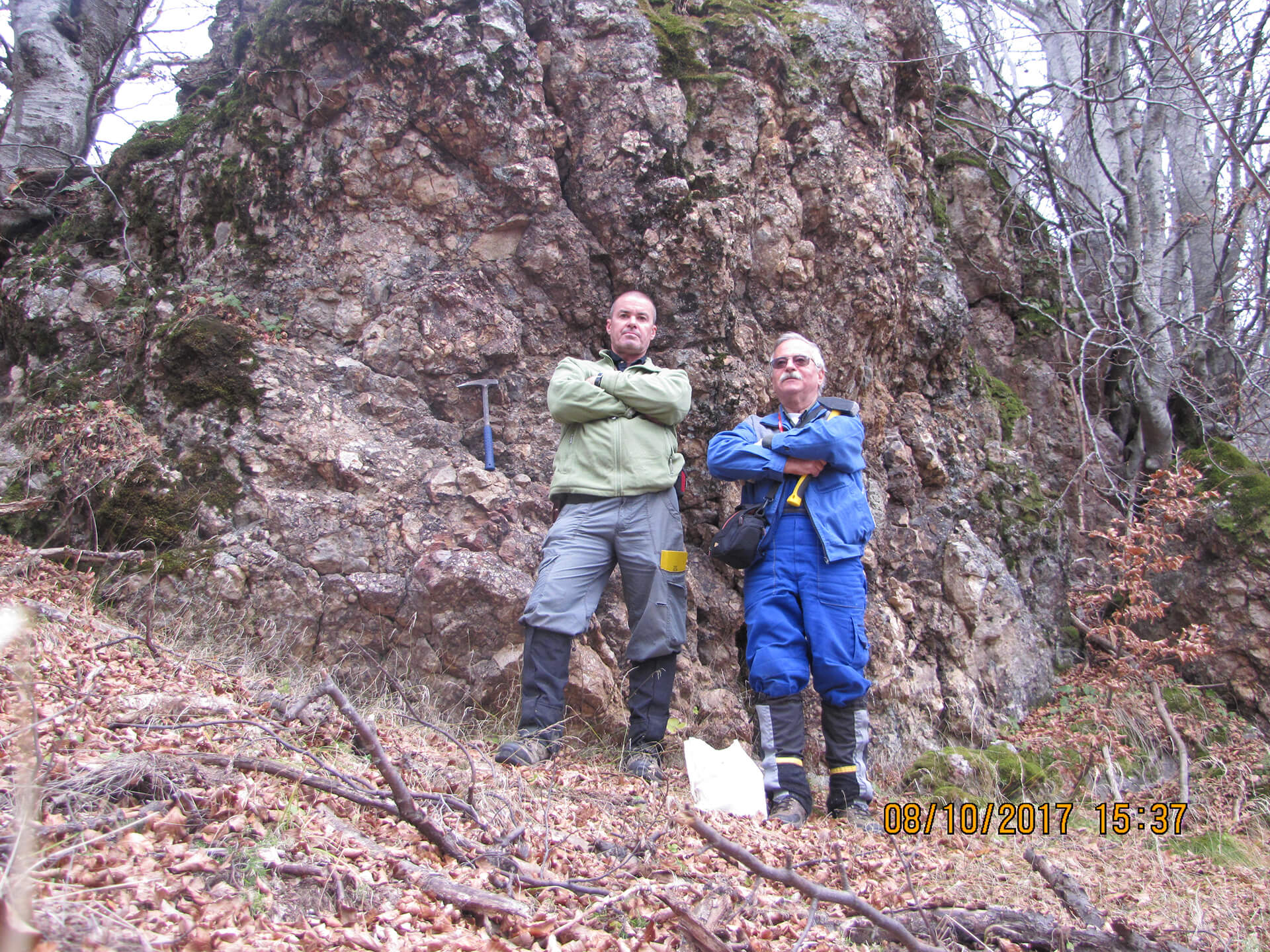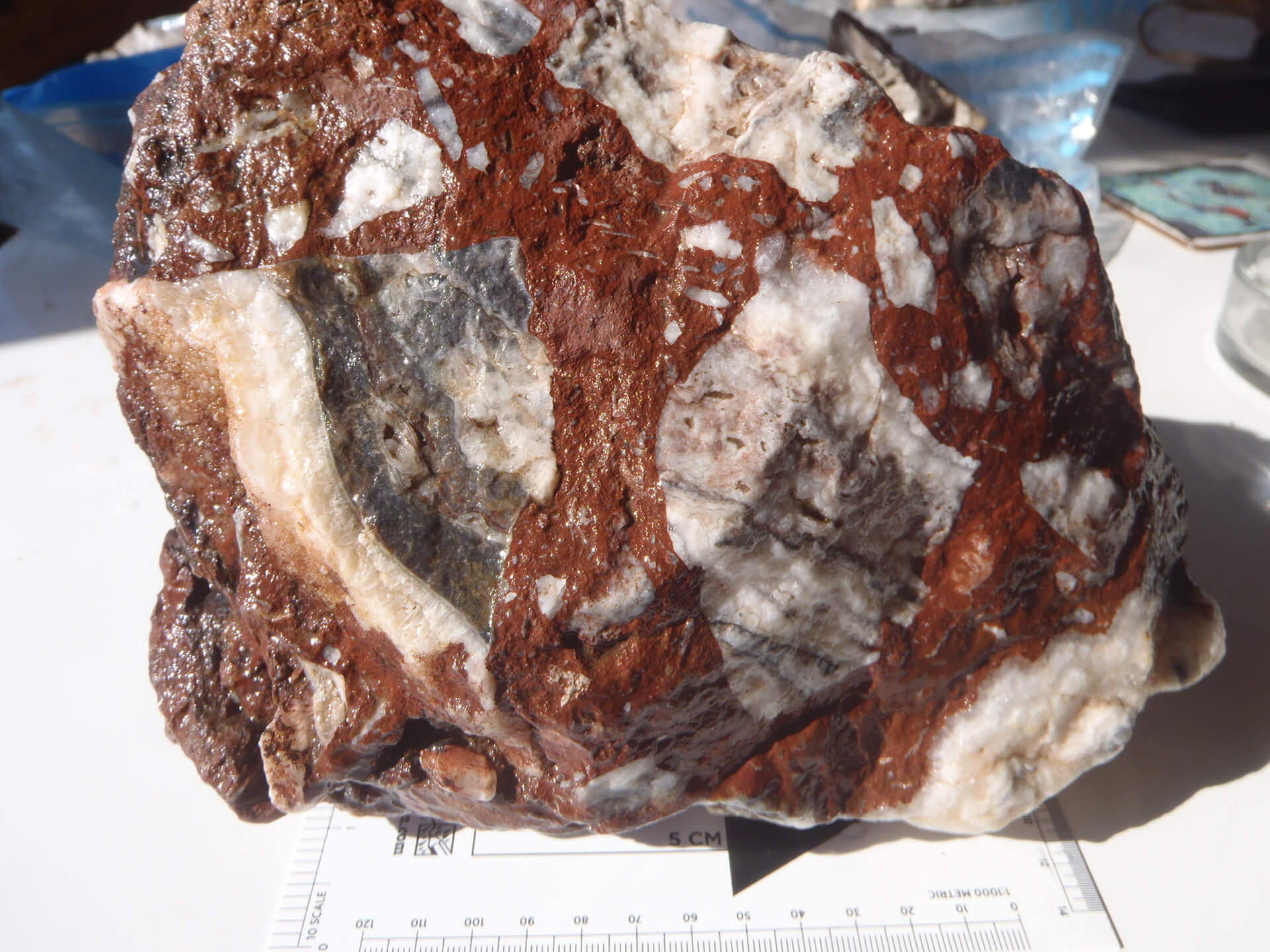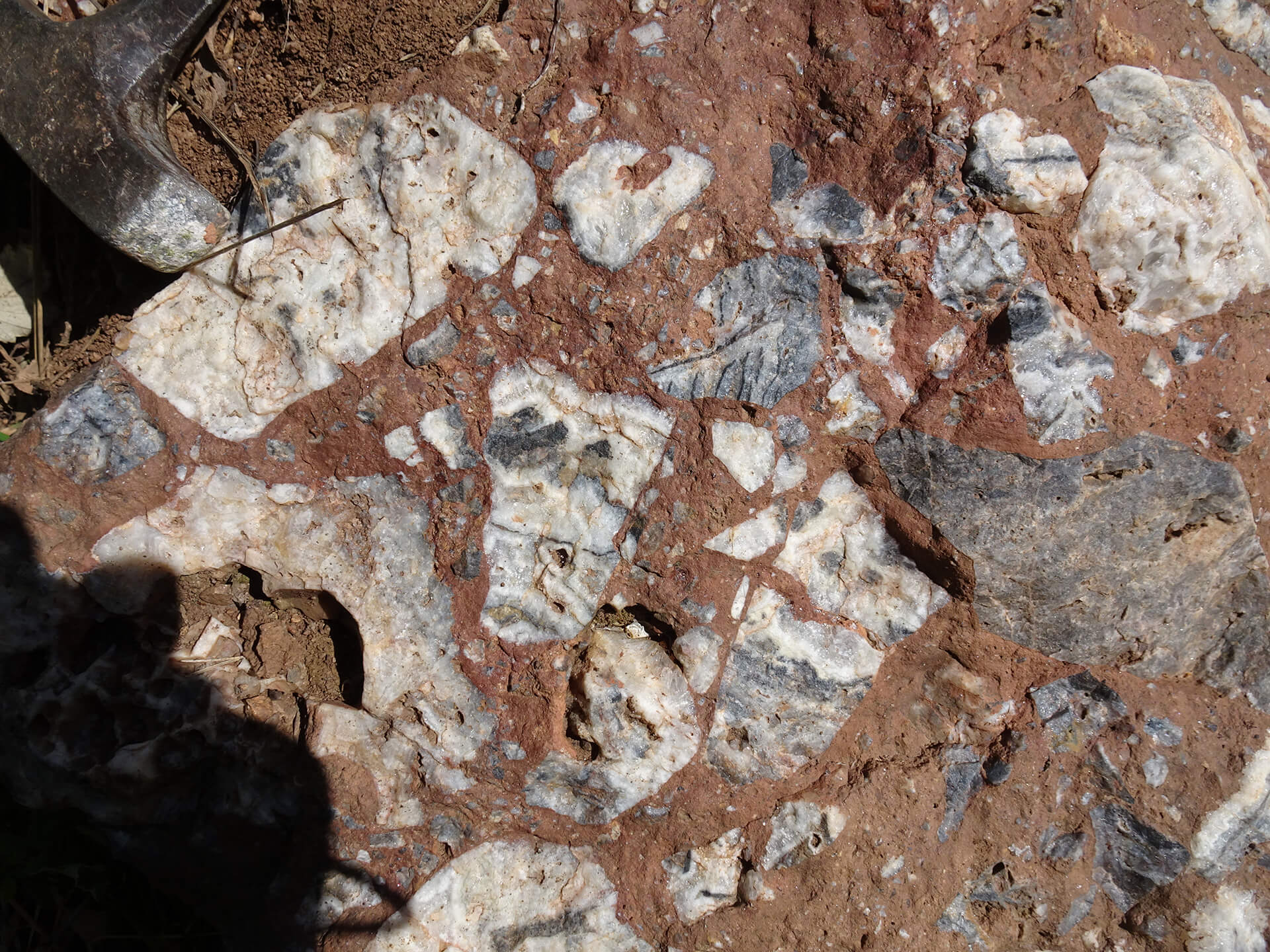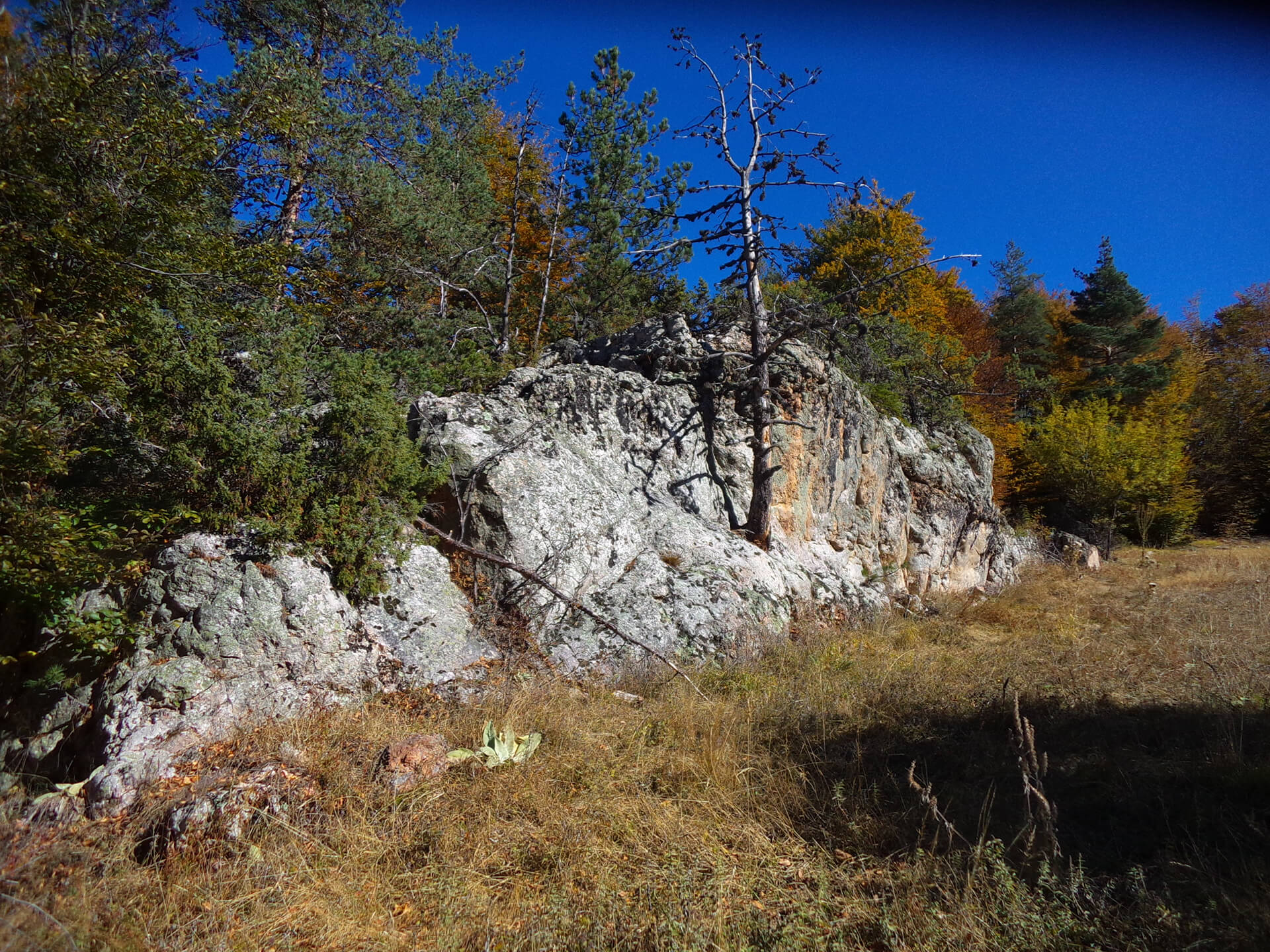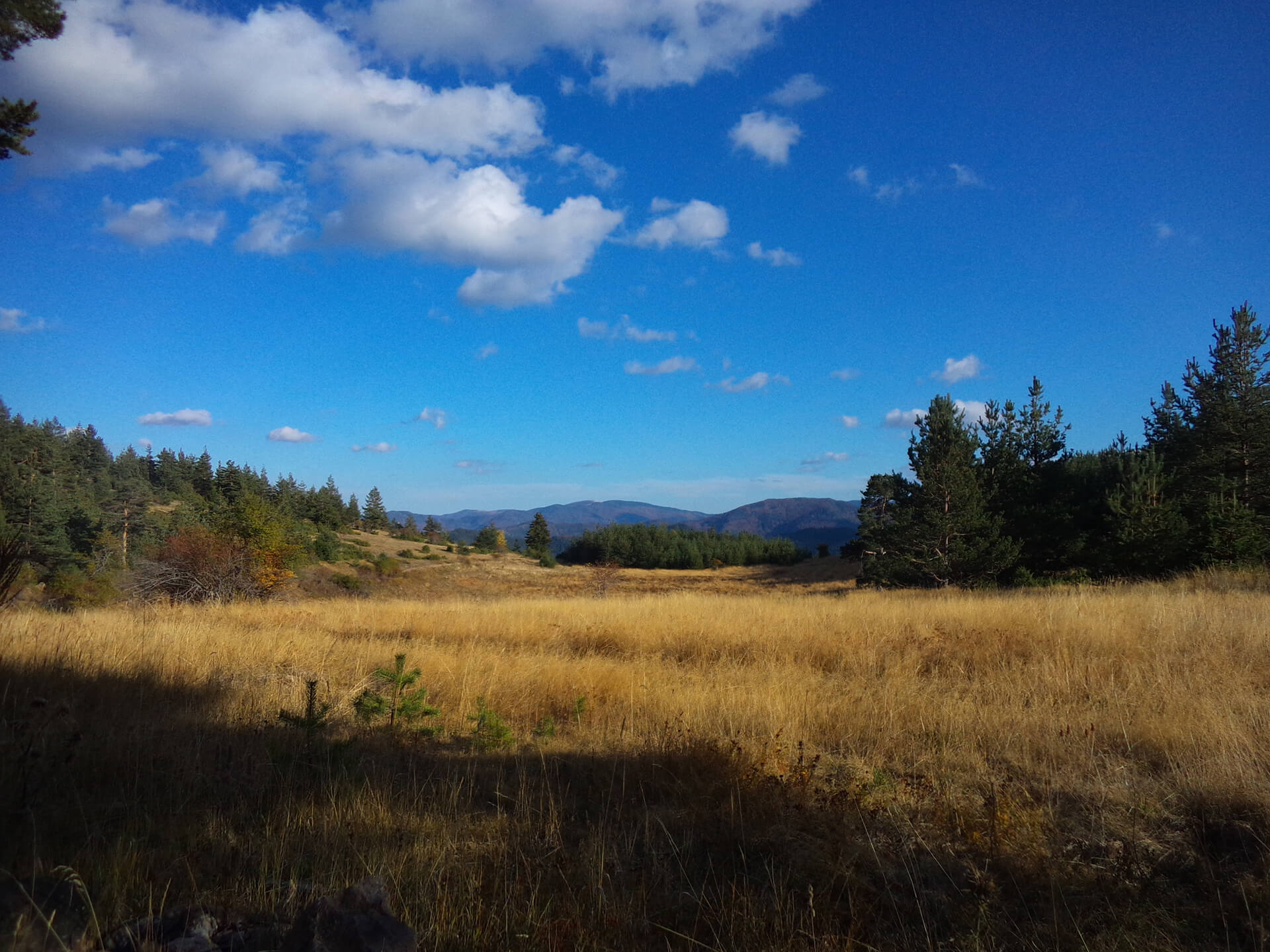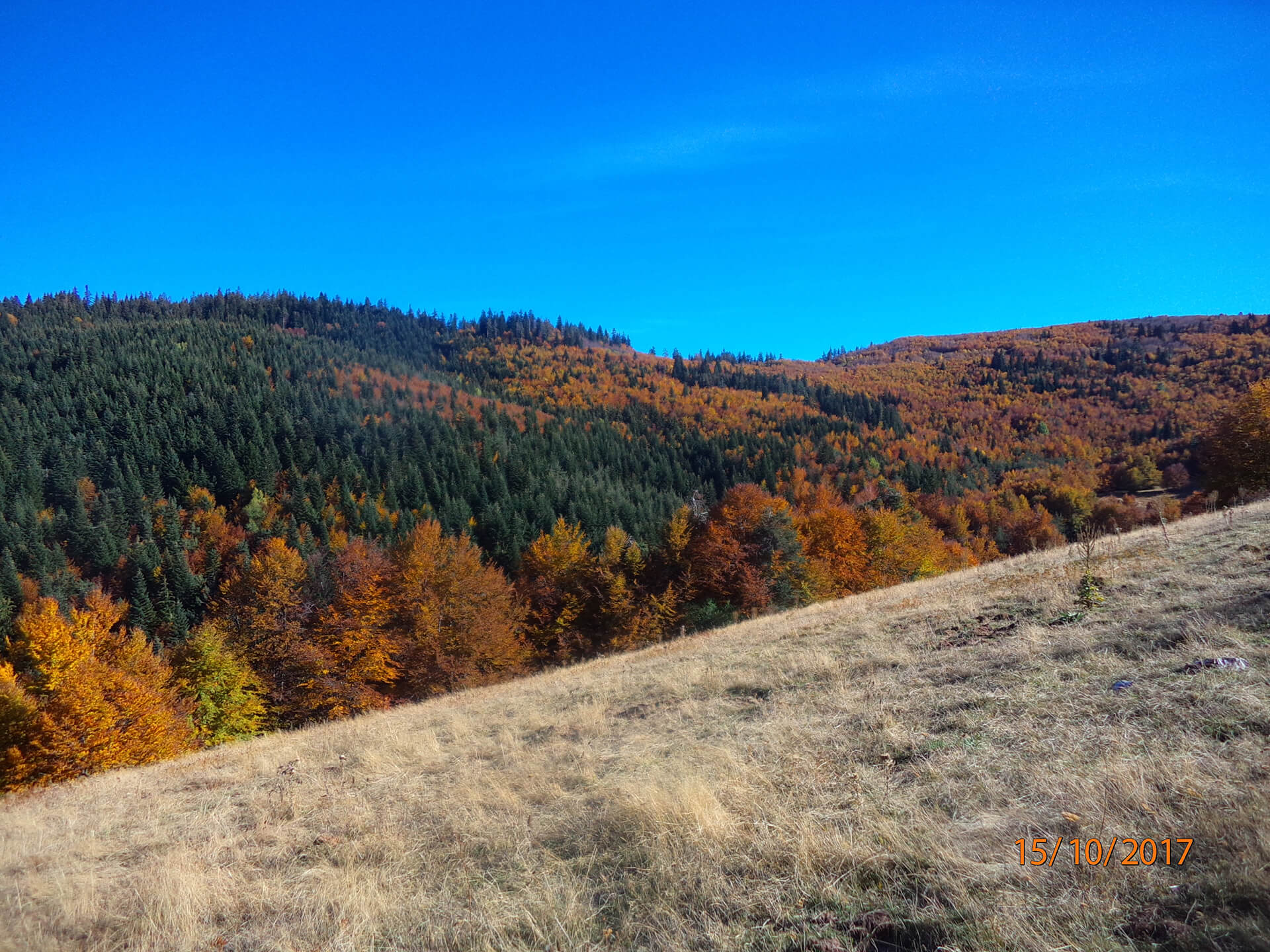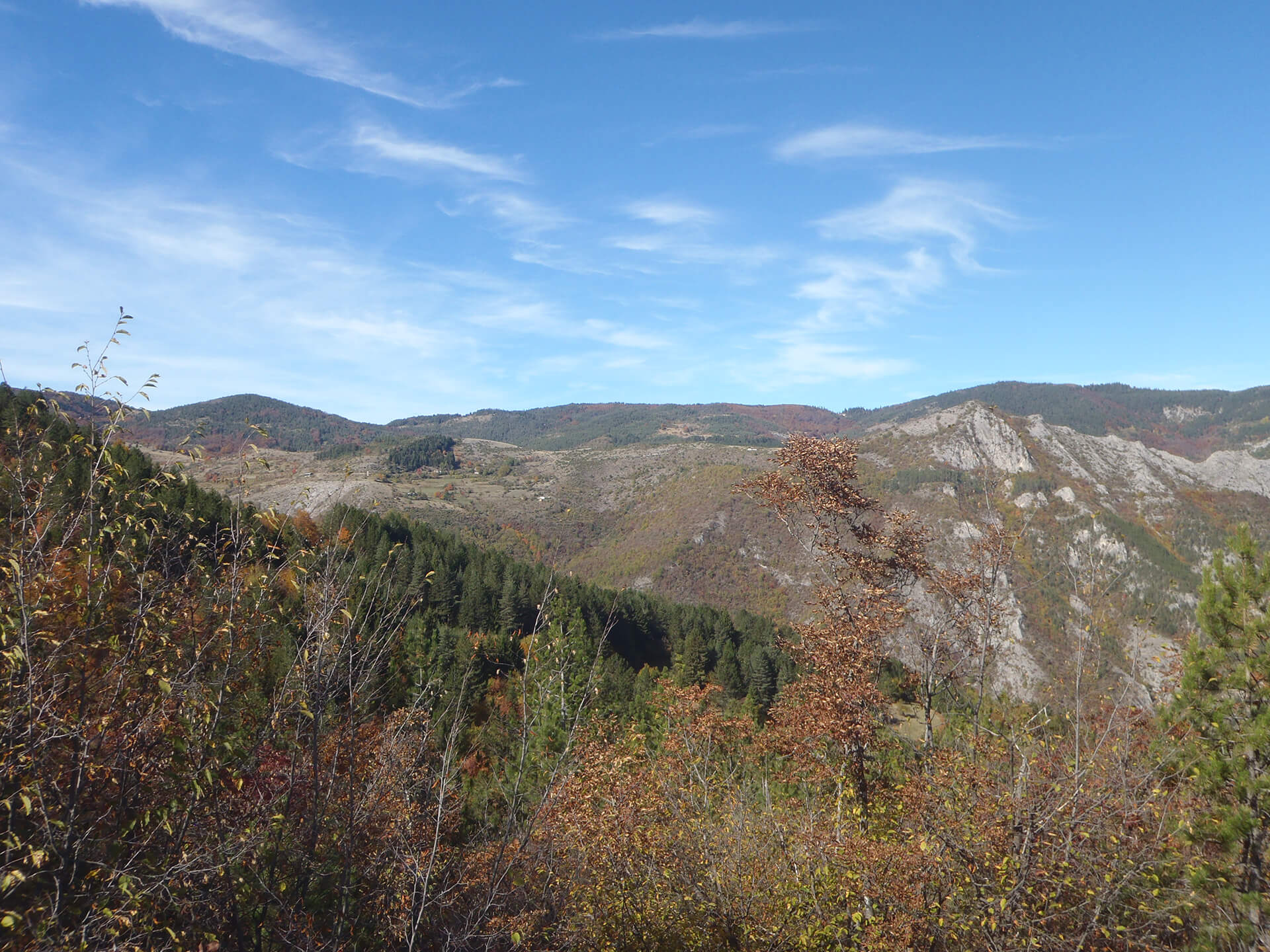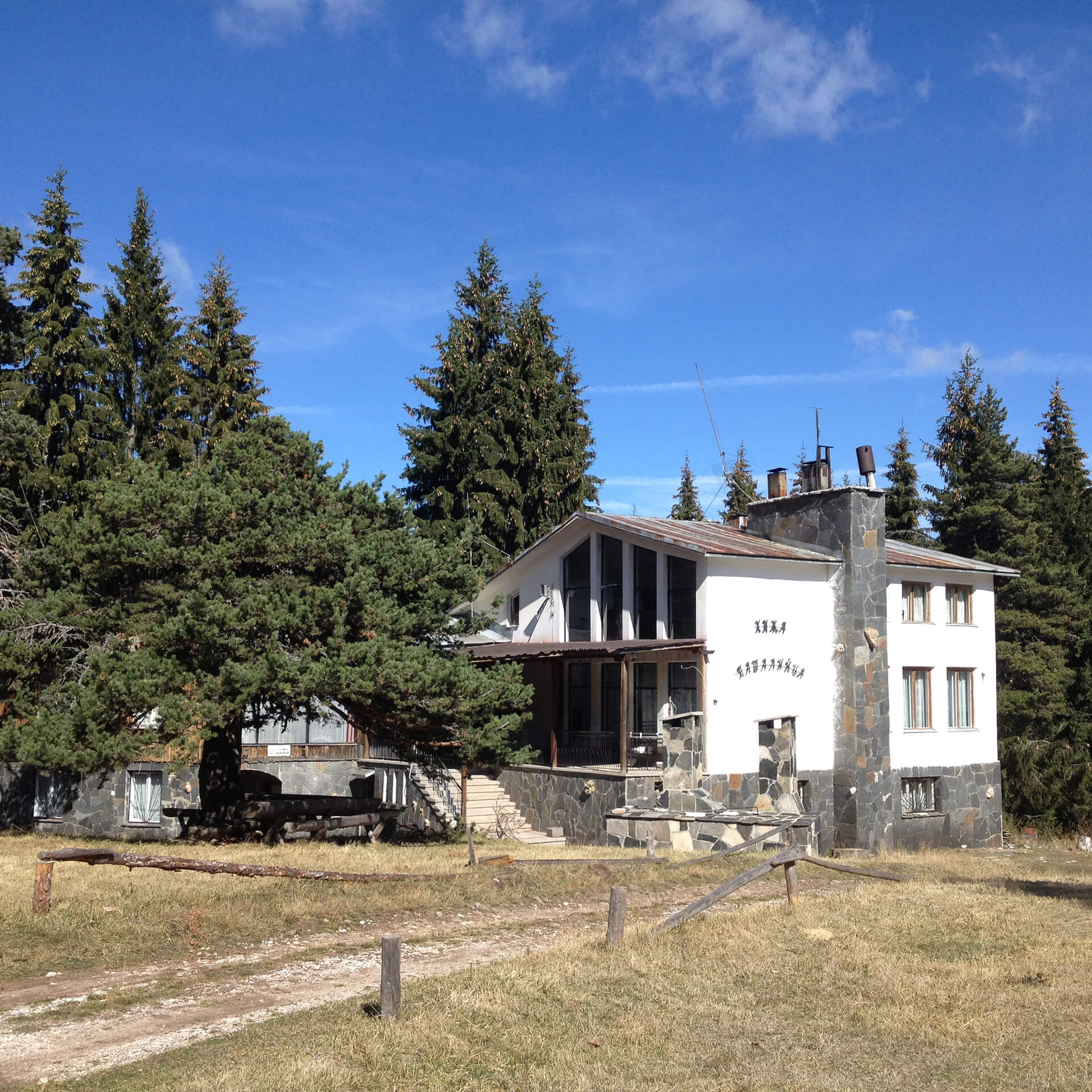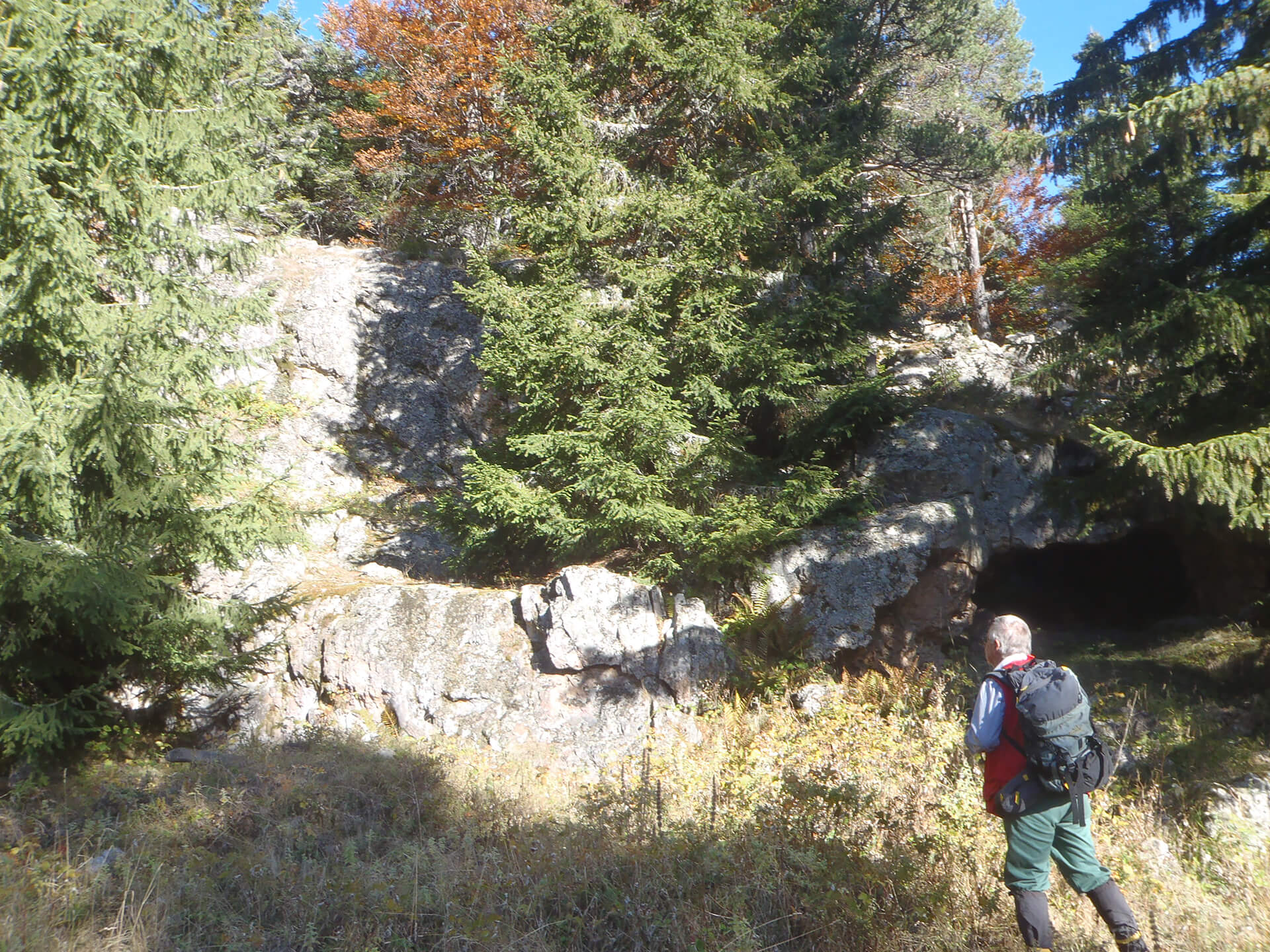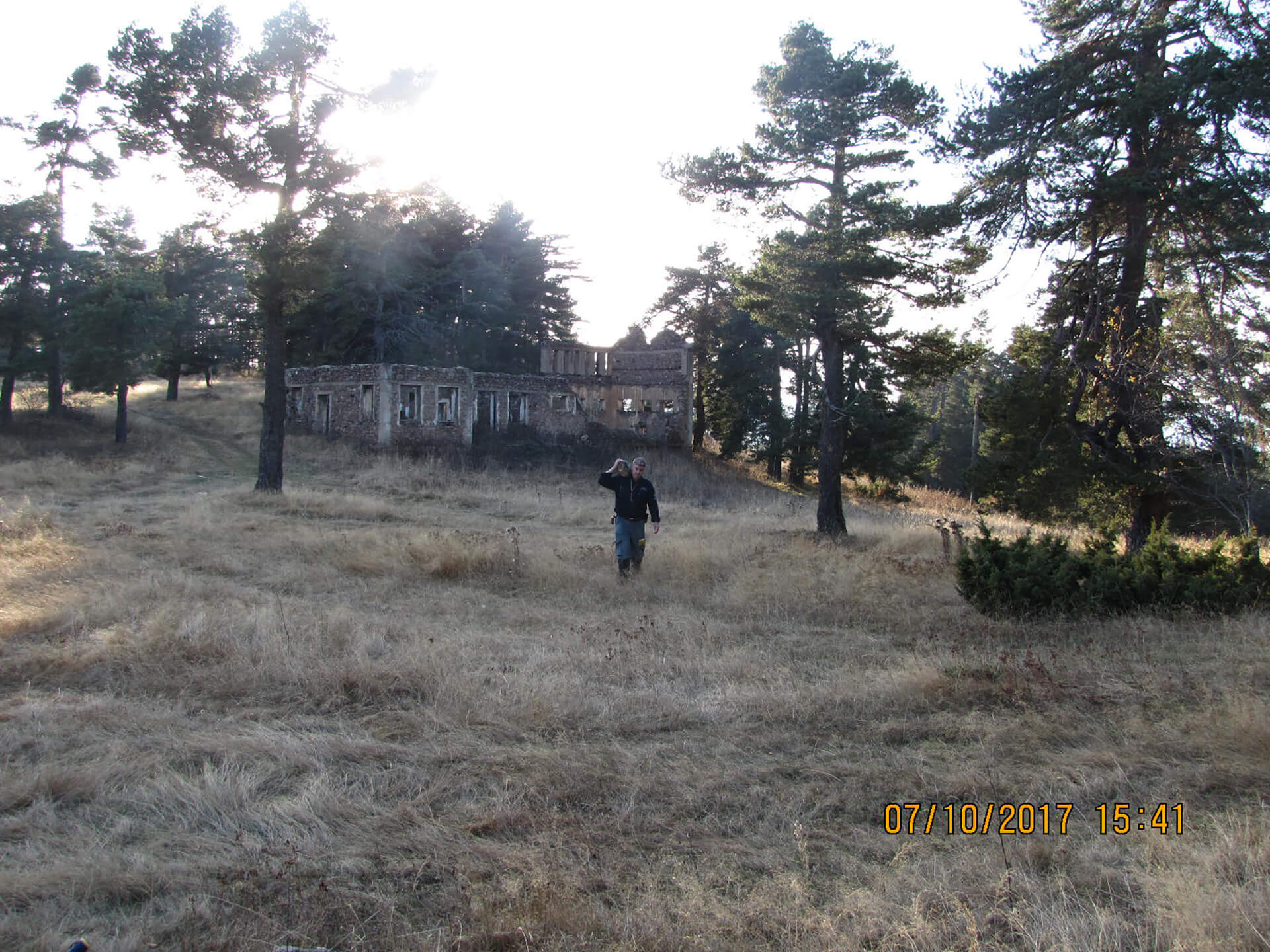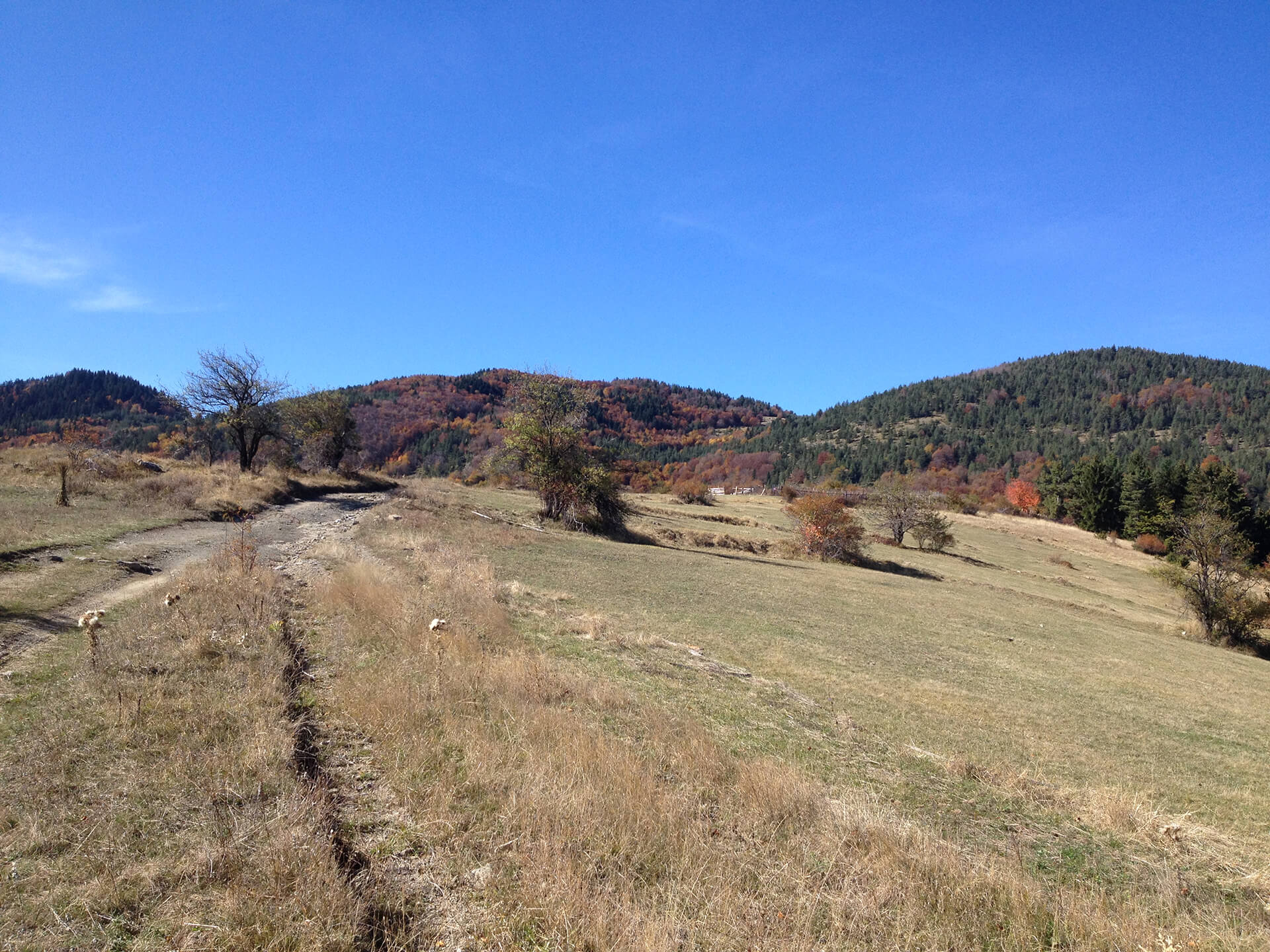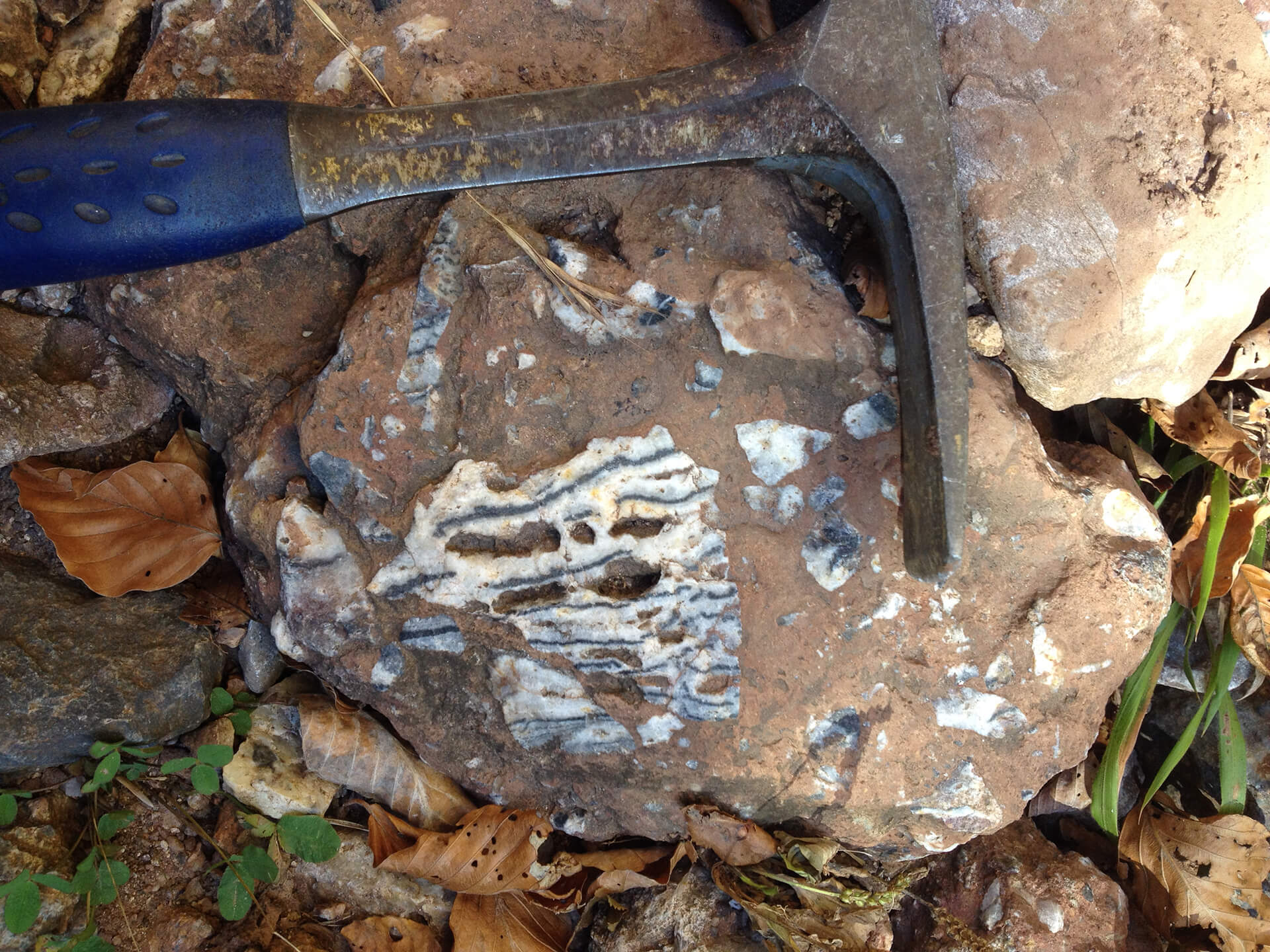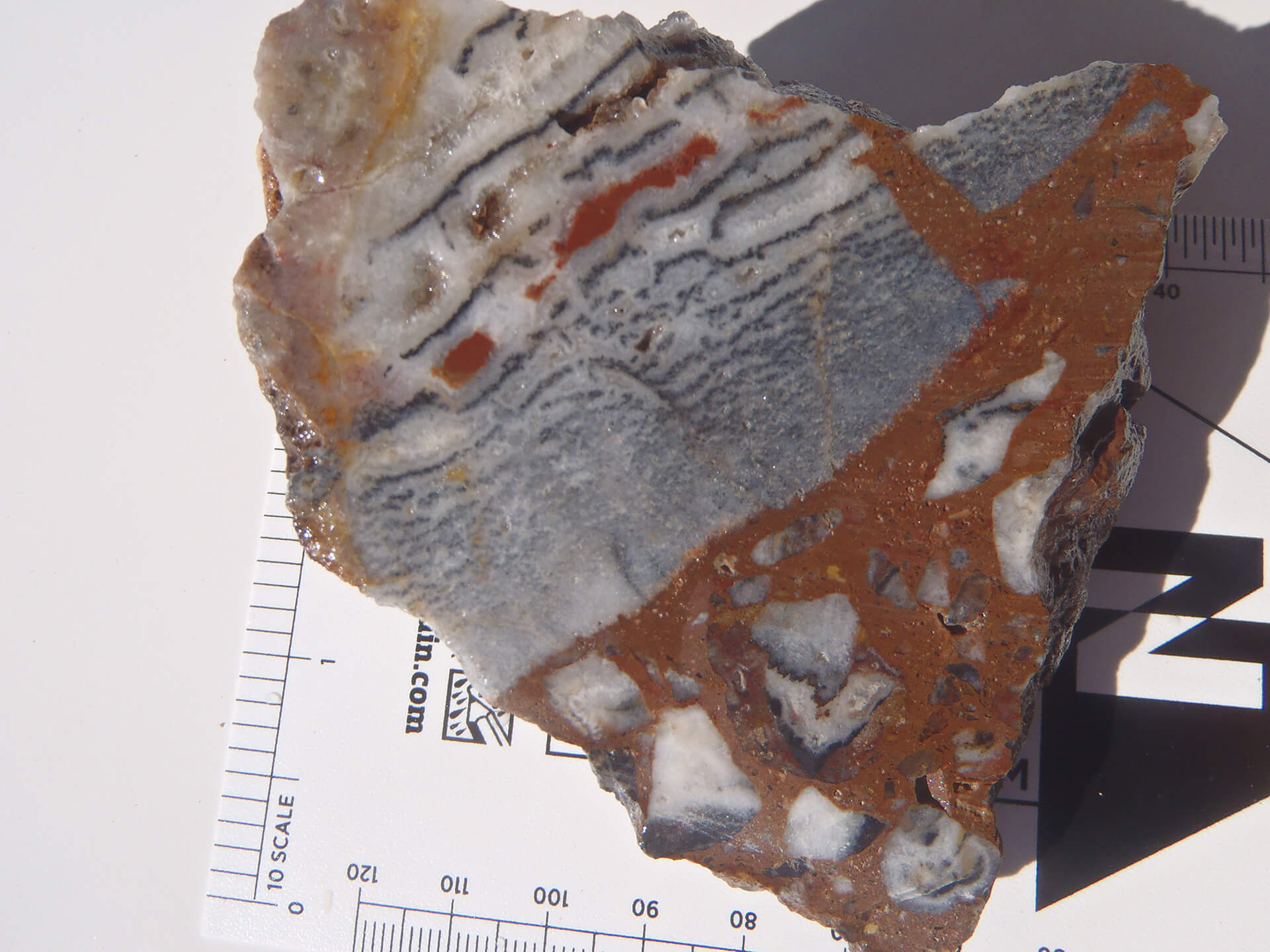Snapshot
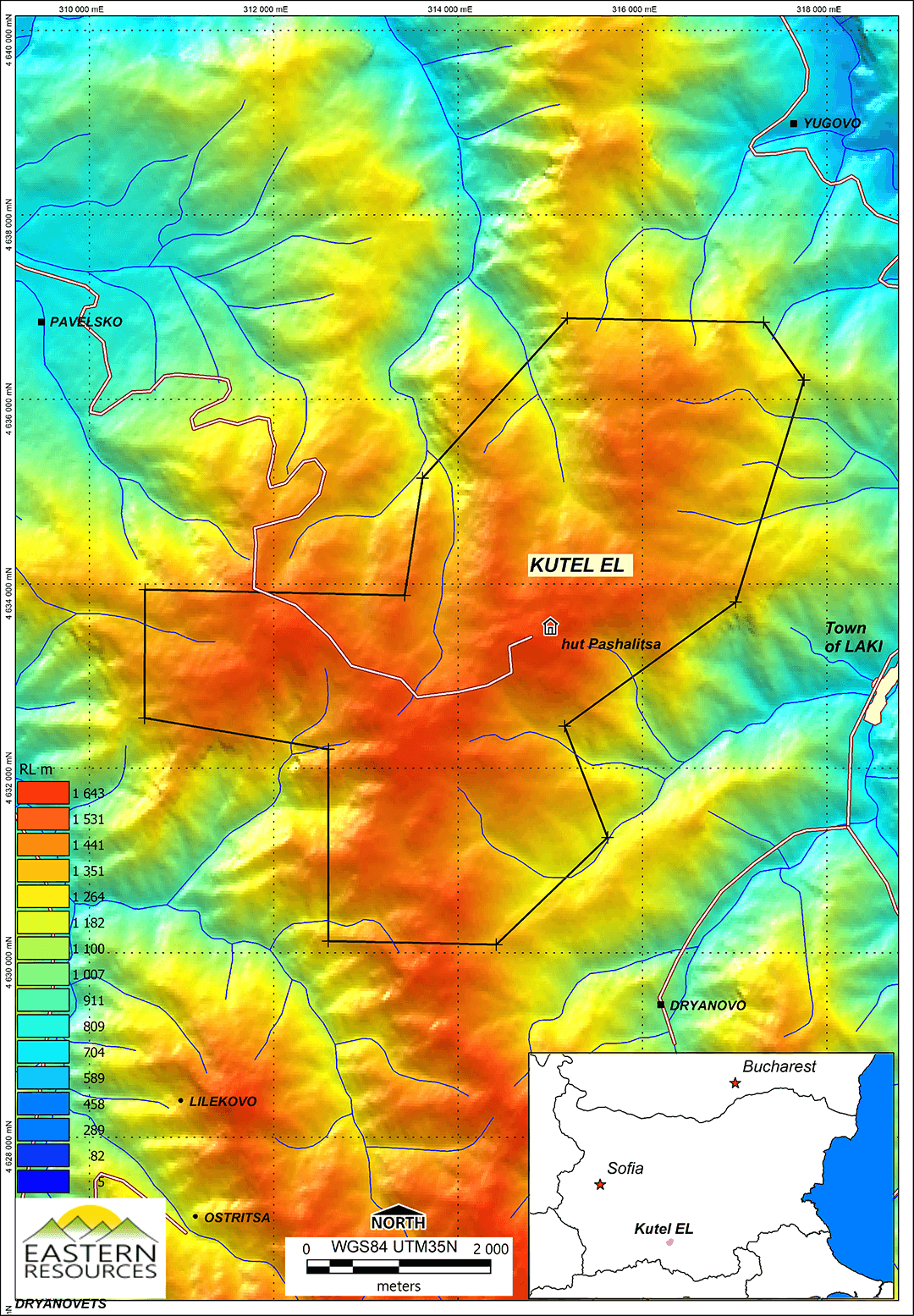
Ownership
100% of the Kutel Exploration Licence (24.4 km2).
Location
150km to the southeast of Sofia, the capital of Bulgaria, within the Rhodope Mountains.
Deposit type
Quartz-adularia-illite vein system/low-sulfidation epithermal gold/hot spring system.
Status
Advanced exploration project – drill ready.
Geology & Mineralization
The Kutel Gold Project is located within the western portion of the Tethyan Belt, which extends from Europe to South-East Asia, and spans 33 countries making up 7.3% of the earth’s land mass. Major gold and copper deposits within the Western Tethyan magmatic belt formed during two main periods of Cretaceous and Tertiary magmatism. The Cretaceous deposits are dominantly copper-gold porphyry and high-sulfidation epithermal systems, whereas the Tertiary deposits display greater deposit diversity and can include low to intermediate sulfidation epithermal systems, together with copper‑gold porphyry systems and carbonate replacement systems.
The Kutel Gold Project is located within the Tertiary age segment of the Western Tethyan magmatic belt and specifically within the Eastern Rhodope metallogenic province. This province contains numerous sedimentary rock-hosted low-sulfidation epithermal systems (quartz-adularia-illite vein systems) of which the best known is the Ada Tepe gold deposit, located 3 km south-east of the town of Krumovgrad.
Rocks associated with the Kutel Gold Project formed within the Eastern Rhodope metallogenic province, which underwent extension and metamorphic core complex formation within a back-arc environment. This was followed by normal faulting, basin subsidence and voluminous volcanic eruptions during the Maastrichtian-Oligocene. During this period of volcanic eruption, the nature of the magma progressively evolved, from calc-alkaline to shoshonitic andesitic to rhyolitic.
Crustal extension within the Kutel Property area was dominated by the detachment bounded Central Rhodopian metamorphic core complex. This structure exposes a crustal section that includes the following tectonostratigraphic units from the structural base to the top:
- A lower high-grade metamorphic unit (gneisses, mica-schists and amphibolite).
- An upper high-grade metamorphic basement unit (marbles and minor amphibolite).
- A sedimentary and volcanogenic unit of Maastrichtian / Paleocene-Miocene syn- and post‑tectonic cover sequences.
At the base of the third unit, Maastrichtian-Paleocene to Middle Eocene clastics, marble sedimentary breccias, and conglomerates form part of a syn-tectonic hanging wall suite of supra-detachment half grabens, which occur in faulted contact with the detachments that bound the metamorphic core complexes. They are also limited by graben-bounding faults and are found lying unconformably over the high-grade metamorphic basement units.
Stratigraphically, Middle Eocene clastics are conformably overlain by Upper Eocene‑Oligocene clastic rocks, conglomerates, and carbonate-rich sedimentary rocks, which mark a renewed cycle of continental, fresh water to marine sedimentation. They were accompanied by regionally widespread, late Eocene-Oligocene volcanic edifices and sedimentary-volcanogenic successions (Bonev et al., 2013).
EXPLORATION MODEL
BULGOLD has developed a geological model of the Property through a grassroots exploration program.
A 15 km2 quartz-adularia-illite paleogeothermal system has been identified, which has been largely preserved from erosion and is supported by a strong and extensive gold-silver-arsenic-antimony surface geochemical soil anomaly.
Multiple hydrothermal explosion breccias (HEBs) have been identified through geological mapping and prospecting, which contain clasts of gold-mineralized quartz-adularia-illite vein material. Clean marble is relatively impermeable, does not dissolve easily and will not react quickly with a hydrothermal fluid, that is near-neutral in pH. The fluid will only become acidic and dissolve carbonate where any sulfide complex is reduced by wall rock reaction (i.e., sulfidation by reaction with iron-silicates in the gneisses) or by boiling.
Fluid flow is confined to the permeability fabric, which will be the faults and hanging wall fracture systems (assuming the fault has a dip).
The marble conglomerate / breccia at the unconformity has inherent porosity, fluid will thus spread laterally assuming the finer grained sedimentary rocks overlying them are replaced. Once fractures and faults are sealed in an impermeable rock with flat foliation planes, in this case marble, unless the fluid can escape through porous rock, such as the marble conglomerate / breccia on the unconformity, fluid pressure will build to suprahydrostatic pressures. The marble host-rock also suggests that the upflow zone will be represented as discrete quartz‑adularia-illite veins.
The likely lithological control to mineralization is the inherent brittleness of the marble unit. Structural controls to mineralization likely relate to the progressive extension of a massive and competent, carbonate, rigid body that fractures to create an extensional vein setting. BULGOLD considers that, from a quartz vein-forming perspective, that the controls to mineralization favour structural over lithological.
Having stratigraphic replacement (SRT) at surface does not preclude the formation of quartz-adularia-illite veins subsurface, providing the permeability fabric remained open, then vein formation is equally permissible. The presence of HEB however, provides a more immediate and effective drill targeting mechanism by identifying flow paths along which boiling has occurred. The significance of the HEBs, and their relationship to gold mineralization, had not been previously recognized and consequently they were not drill tested by previous explorers.
HEBs form as a result of violent boiling (‘flashing’ or violent phase separation), which creates the highest fluid flux state and maximum gold deposition. The amount of SRT outcropping on the Kutel Gold Project is extensive, which indicates that a well-developed permeability fabric was extant within the Property during the period of gold mineralization.
The below figure shows the conceptual exploration model developed by BULGOLD, based on all geological observations made to date on the Property. The example used is the Kutel HEB; however, the conceptual exploration model is also applicable to the Kumina and Yavor HEBs.
Conceptual Exploration Model for the Kutel Gold Project
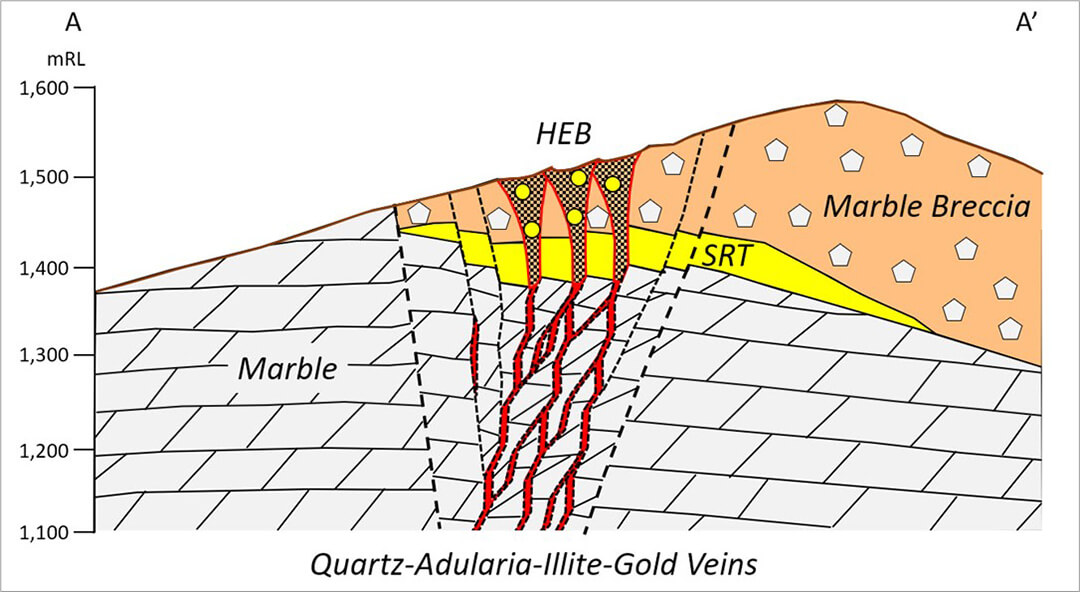
Notes: Conceptual exploration model for the occurrence of quartz-adularia-illite veins on the Kutel Property based on the Kutel HEB. HEB = hydrothermal explosive breccia; SRT = chalcedony replaced sedimentary rocks.
Source: Eastern, 2022.
Mineral Reserves and Resources
To Be Established.
Maps & Sections Gallery
Exploration Gallery
Technical Report
